

YMAC REPRESENTATIVE AREAS
YMAC Repres entative Areas
Legend
LEGEND:
Legend
YM AC Repres entative Areas
Ge ra ldto n RATSIB
Geraldton RATSIB
Ge ra ldto n RATSIB
Pilbara RATSIB
Pilbara RATSIB
Pilbara RATSIB
RATSIB: Representative Aboriginal/ Torres Strait Islander Body
Pilb ar a RATS IB
Geraldton
Carnarvon
Meek atharra PERTH
WEST ERN AUSTRALIA
Geraldton
Meekatharra PERTH
WESTERN AUSTRALIA
Ge raldton RATS IB
Yamatji Marlpa
ACKNOWLEDGEMENT OF COUNTRY
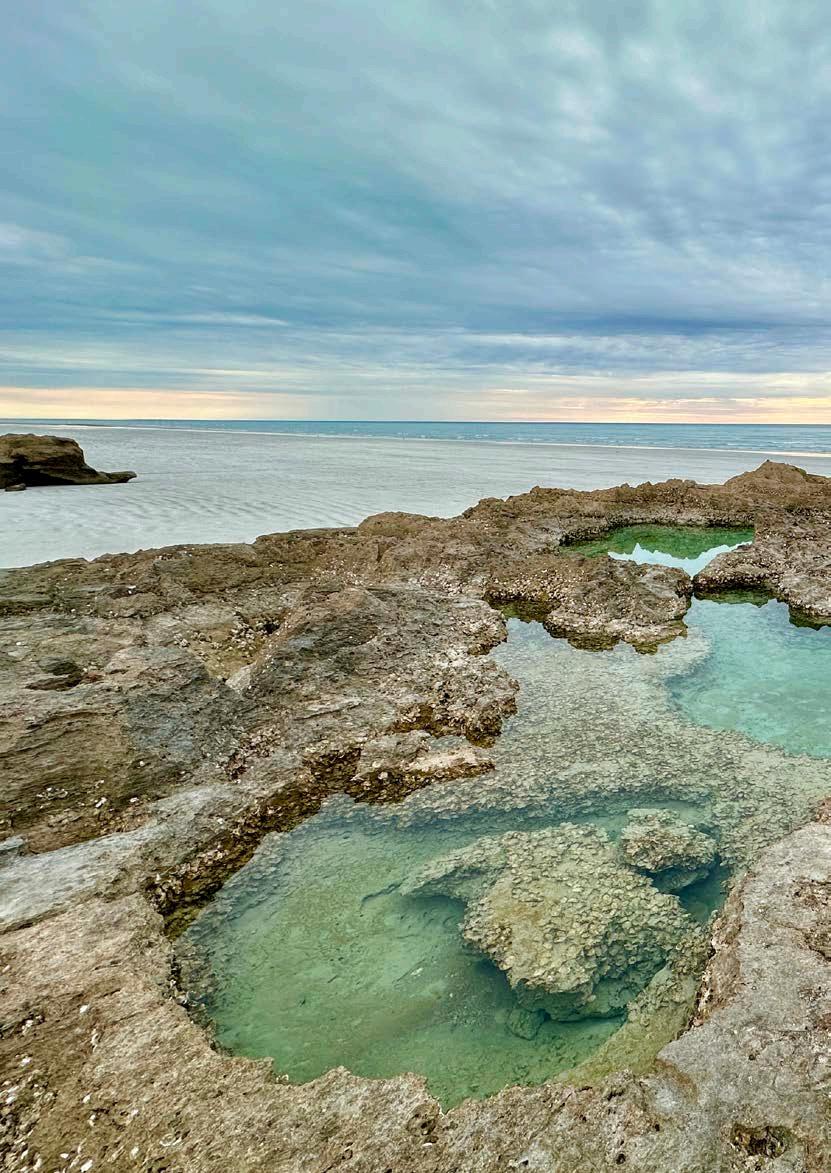
Yamatji Marlpa Aboriginal Corporation respectfully acknowledges the Traditional Owners and custodians throughout Western Australia, and on whose Country we work. We acknowledge and respect their deep connection to their lands and waterways.
We honour and pay respect to Elders, and to their ancestors who survived and cared for Country.
Our offices are located on Whadjuk Country, Southern Yamatji Country, Kariyarra Country, and Yawuru Country.
We recognise the continuing culture, traditions, stories and living cultures on these lands, and commit to building a brighter future together.
Nyangumarta Country (image: Tash Gillespie)
Yamatji Marlpa
ABOUT US
Yamatji Marlpa Aboriginal Corporation (YMAC) is recognised as a Native Title Representative Body (NTRB) under section 203AD of the Native Title Act 1993 (Cth) (NTA) to preserve, protect and promote the recognition of native title in the Yamatji (Geraldton RATSIB) and Marlpa (Pilbara RATSIB) regions of Western Australia (WA).
YMAC prides itself on offering tailored support to the people and organisations it works with, recognising each has unique needs, aspirations and opportunities available to them. In doing so, YMAC provides a range of services to Prescribed Bodies Corporate (PBCs) and Aboriginal corporations, including (but not limited to):
• Legal advice and representation of Traditional Owner groups in obtaining and managing native title rights and interests.
• Anthropological services, including native title research.
• Cultural heritage services.
• Executive office, governance and administrative support, and financial services.
• Natural resource management support, including ranger programs and land and sea management programs.
• Social Surroundings project facilitation and management.
• Geospatial and mapping services.
• Community and economic development assistance.
• Information technology and management services.
• Communications services and support, and media training.
Further, YMAC is also continuously advocating for relevant legislative and policy reforms that will:
• Better protect Traditional Owners’ rights and interests.
• Result in improved equity and fairness in negotiations and agreement-making.
• Enhance opportunities for advancement and the securement of prosperous futures.
As an Aboriginal corporation, YMAC is governed by the Corporations (Aboriginal and Torres Strait Islander) Act 2006 (Cth) (CATSI Act). Under the CATSI Act, YMAC is required to report annually to the Office of the Registrar of Indigenous Corporations (ORIC). This includes a general report, financial report, and Directors’ report (with each submitted to ORIC by 31 December).
YMAC accepts the invitation contained in the Uluru Statement from the Heart and will continue to walk together with Aboriginal and Torres Strait Islander peoples in a movement of the Australian people for a better future.
OUR GUIDING PRINCIPLES
The core of YMAC is Country.
Country is our mother, our provider and keeper of our cultural belongings. Culture and Country go together. You can’t have one without the other.
YMAC’s Strategic Plan 2021-2025 guides what we do and how we do it.
Our VISION
Through connection to Country, Aboriginal people pursue and achieve economic, social and cultural goals and aspirations with strength and confidence.
Our MISSION
For current and future generations, we work with and for Australian Aboriginal people to protect rights and manage Country and opportunities.
Our VALUES
Our values describe our principles and desired culture; serving as a behavioural compass for directors, committee members and staff.
Collaboration:
Through teamwork, courage and shared knowledge we pursue meaningful outcomes.
Professionalism: We set and maintain high standards and pursue excellence in all aspects of our work.
Integrity: We are true to our word and accountable for our actions.
Respect and understanding: Having regard for people’s views and roles and treating all with dignity. We are dedicated to listening to others and to understanding community.
Our STRATEGIC PRIORITIES (2021-2025)
1
Deliver on our responsibilities to Traditional Owners, Common Law Holders and Country.
2 Build on a tradition of operational excellence.
3
Foster a culture of connection across and beyond YMAC.
4
Build capacity and mobilise opportunities.
CO-CHAIRPERSONS’ REPORT
Welcome to YMAC’s Annual Report 2025. It is always a pleasure and our privilege to provide a recap on some of the major outcomes the organisation has played a part in during the reporting period. These efforts encapsulate YMAC’s strong, ongoing commitment to help advance and advocate on behalf of the people and organisations we represent and work with.
As YMAC continues to evolve and transition to a more post-determination focus, we cannot lapse in our recognition of milestone native title determinations and other ongoing claim work. For example, in February 2025, we were so proud to help celebrate two new consent determinations for Nanda and Wajarri Yamatji peoples. Further, within the current reporting period, YMAC filed two new claims over previously unclaimed areas within our representative regions: Badimia Barna; and Nhuwala. The work that has gone into reaching these outcomes has spanned years, and is a great achievement for all Applicants involved – including those who are no longer with us – as well as the staff and consultants who worked tirelessly to progress each claim.
Another exciting undertaking for YMAC this past year has been the development of our next strategic plan, which will guide the organisation’s priorities and activities for the period 2026 through 2030. This work has involved extensive independent consultations, delivered through various means, including face-to-face engagement and an online survey. This process, led by First Nations consultant Mandy Gadsdon of Think Culture, has been particularly rigorous to ensure we heard from a broad array of stakeholders to inform YMAC’s ongoing strategic directions, and we are very eager to see how the new plan takes shape.
Under YMAC’s current Strategic Plan 2021-2025, we continue to deliver on our existing priorities. In 2024, this included organising our two annual on-Country meetings, which have become highly anticipated events in the calendar across each representative region.
Both the On-Country Bush Meeting at Yule River (held in July) and Yamatji On-Country (held in September) attract more and more positive interest each year, including YMAC successfully securing funding to support future events and related work. Not only are these important gatherings for Traditional Owners to get together and work collectively on region-wide issues, they also provide a great opportunity for others to engage with community and cultural activities. A main feature of these events continues to be the respective Calls to Action, which appear to be gaining traction with government and other service providers. You can read more about the meetings and related Calls to Action work in the ‘Policy, advocacy, and community engagement’ section of this report (see page 19), and/or by visiting ymac.org.au/events.
Other key advocacy work YMAC has had significant involvement in during the reporting period relates to the Australian Law Reform Commission (ALRC) Future Acts Review. Following preliminary meetings between YMAC and ALRC staff in late-2024, in February 2025, YMAC hosted an in-person consultation for Prescribed Body Corporate (PBC) directors and staff from across our representative regions, to facilitate direct input to the ALRC about its review and propose potential improvements.
YMAC also incorporated feedback shared by the ALRC forum attendees into our own final submission to the review (due in July 2025). Find more about ALRC’s review at ymac.org.au/review-of-thefuture-acts-regime.
Similarly, in May 2025, YMAC coordinated and hosted an online Aboriginal Lands Trust (ALT) information session for PBC directors and staff. This session –organised in response to requests made by PBCs in our representative regions –provided valuable, practical updates for participants, presented by the Western Australian Department of Planning, Lands and Heritage (DPLH) staff. A recording of the webinar is available to watch on YMAC’s YouTube channel: youtube.com/@ yamatjimarlpaaboriginalcor8030.
Also in May 2025, the State Government announced its appointment of the National Native Title Tribunal (NNTT) to conduct a targeted review of native title and Aboriginal cultural heritage processes in Western Australia’s mining and exploration sector. Following this announcement, YMAC has been engaging with members of NNTT’s review team to share our concerns and ideas for improvements. While it has been advised this review won’t lead to any legislative changes, YMAC remains hopeful that it may still result in refining the processes related to native title and cultural heritage negotiations with industry.
Lastly – but certainly not least – we would like to recognise the enormous amount of work YMAC has undertaken responding to the introduction and implementation of the Firearms Act 2024
Natalie Parker Co-Chairperson Pilbara Region
(WA). Understandably, given the lack of consultation prior, these new laws created a lot of confusion and anxiety for individual Traditional Owners and PBCs alike. In an effort to address concerns raised with YMAC, in particular how these reforms impact certain rights protected by the Native Title Act 1993 (Cth) (NTA), we have been fiercely advocating for better engagement, communication and support for those trying to navigate the new requirements and systems. This work has involved YMAC directors and staff attending multiple meetings with the relevant Ministers and WA Police, as well as significant correspondence and information sharing. It has, however, been rewarding to receive positive feedback from community, PBCs and government regarding the role YMAC took on with respect to this very important matter. Further information about the new legislation and YMAC’s continuing advocacy can be found at ymac.org.au/ firearms-act-2024-wa.
In closing we thank and acknowledge our fellow regional committee and directors for their ongoing commitment and contribution throughout the year – in particular our Deputy Co-Chairs Mrs Doris Eaton (Pilbara) and Ms Deborah Oakley (Yamatji).
Peter Windie Co-Chairperson Yamatji Region

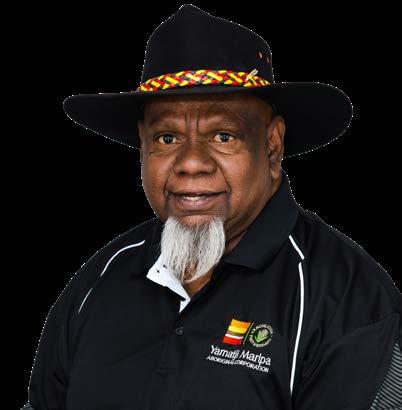
CHIEF EXECUTIVE OFFICER’S REPORT
I am always grateful for the opportunity to reflect on YMAC’s many accomplishments when it comes time to compile what the organisation has been up to in our annual reports. So often, in the day-to-day operations, we might lose sight of our important achievements and the significant, positive impacts we are able to make in our work.
Being able to capture and share these here, instils such a strong sense of pride, as well as encouragement for the future. Such great outcomes would not be possible without the dedication and hard work of YMAC’s incredible Board of Directors, Regional Committees, and staff. Further, on behalf of YMAC, I also thank everyone who has worked with and supported us to produce these fantastic results. Together, we continue to be an exceptional and leading organisation in the native title sector.
In recent years, YMAC’s introduction of various annual consultative and educational forums has produced invaluable opportunities for attendees to meet, network and learn from each other. These events also afford YMAC the chance to share relevant sector updates and present on our own current activities, as well as receive direct and meaningful input and feedback from members, clients and other stakeholders. Two of these key initiatives held in the 2024-25 Financial Year were: our ‘Native Title Forums’ – with an event held in each YMAC representative region in August 2024; and our ‘PBC CEO Roundtable’ – held in Perth in March 2025. The response to YMAC organising these specific gatherings has been overwhelmingly positive, and we look forward to delivering additional similar forums going forward.
Another event highlight every year is YMAC’s ‘All Staff Conference’; the most recent being held in Perth in February 2025. These conferences are essential in creating a time and space for YMAC staff who may otherwise not – due to the circumstances of their roles and/or office locations – get the chance to meet and connect in-person. They also host a range of both internal and external presentations, which assist with enhancing cultural awareness and safety within the organisation, broadening cross-discipline understanding, and much more. A very special part of these conferences, for me, is getting to announce the Values Awards, which recognise the outstanding work of individual staff members, as nominated by their peers. It is such a privilege to lead a team who go so far above and beyond in dedicating themselves to the many varied undertakings YMAC is involved in.
I would also like to share my gratitude to those directors, committee members, and staff who contributed to the latest YMAC performance review – routinely conducted by the Nous Group on behalf of the National Indigenous Australians Agency (NIAA) – during this reporting period. I acknowledge this significant undertaking creates an additional workload for all involved, and assure you that your commendable efforts do not go unnoticed and are very much appreciated.
Further, I would like to acknowledge everyone involved in YMAC’s continued efforts advocating for First Nations’ equity and genuine project partnerships in the renewable energy space – i.e. extending on our earlier well-received publication of the YMAC Renewable Energy Guide (see, ymac. org.au/renewable-energy). Continuing from June, and through to December 2024, I was honoured to represent YMAC on the First Nations Clean Energy and Climate Change Advisory Committee (FNCECCAC). Through this committee I was proud to be part of the development and launch of the national First Nations Clean Energy Strategy. One of the biggest, current opportunities for Traditional Owners – to be at the forefront of a clean energy future for Australia – presents so many possibilities.
It is YMAC’s hope to continue to work with groups in our representative regions – and support them in applying our Best Practice Standards (which also align with the national strategy) – to fully realise their potential and truly benefit from the value they bring to such agreements.
Finally, I would be remiss in not also acknowledging the following people and firms for their generous pro bono support provided to YMAC throughout the reporting period: Peter Seidel and Bridgid Cowling of Arnold Bloch Leibler; Philip Hunter of HWL Ebsworth; and, Tim Lyons of Gibson Lyons Lawyers. YMAC is so fortunate to receive your ongoing advice and assistance. Thank you.

Simon Hawkins Chief Executive Officer
STRATEGIC PRIORITY HIGHLIGHTS
The following provides a snapshot of key achievements against YMAC’s four Strategic Priorities over the reporting period. Further detail on connected activities can be found in the extended report.
Strategic Priority 1: Delivering on our responsibilities to Traditional Owners, Common Law Holders, and Country
This reporting period we celebrated two native title consent determinations in February 2025, for the Nanda and Wajarri Yamatji peoples. These were the culmination of decades of work by all involved, and achieving this recognition is a major milestone for both groups.
YMAC also lodged two new claims over previously unclaimed areas this past year: Badimia Barna; and Nhuwala. Again, these great outcomes are driven by a lot of dedication and hard work from a lot of people, and we congratulate everyone who helped make them happen.
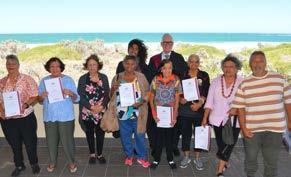
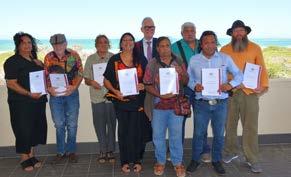
Other highlights under this priority are:
• Undertook extensive interviews, family consultations, field work, and site visits for multiple priority unclaimed areas, and engaged with the State Government about claim progression in these areas.
• Initiated two National Native Title Tribunal (NNTT) facilitated joint research meetings for unclaimed areas in Nyamal, Nyangumarta and Ngarla (NNN) Country.
• Progressed four Return of Materials (RoM) projects with PBCs across both regions, plus presentations of RoM options to four additional Prescribed Bodies Corporate (PBCs).
• Provided high level future act and exclusion zone advice to PBCs.
• Provided submissions and advice relating to the Australian Law Reform Commission (ALRC) Future Acts Review, the Firearms Act 2024 (WA), and the State Government’s Native Title and Cultural Heritage Processes Review.
• Progressed development of an organisation-wide compensation claims strategy, and supported four PBCs in pursuing their individual compensation claims.
• Facilitated YMAC’s second PBC CEO Roundtable in Perth in March 2025, providing an opportunity for CEOs to connect over shared experiences in the native title space.
• Hosted a webinar on the Aboriginal Lands Trust (ALT) for PBC directors and staff in June 2025.
Nanda Native Title Holders at the Nanda Part C Native Title Determination (image: José Kalpers).
Wajarri Yamatji Native Title Holders at the Wajarri Yamatji Part F Native Title Determination (image: José Kalpers).
Strategic Priority 2: Building on a tradition of operational excellence
This reporting period the corporation has continued to refine and strengthen internal systems, and to invest in our staff through several developmental opportunities. We also engaged external consultant Think Culture to undertake extensive consultation and development of a new strategic plan for YMAC, to cover the 2026-2030 period, due to be published by the end of 2025.

Other achievements include:
• Delivered Staff Cultural Awareness Training on Nyangumarta Country late July/early August 2024.
• Presented YMAC All Staff Conference – for all full and part-time staff – including presentation of Annual Long Service and Values Awards, in February 2025.
• Secured funding from the Australian Government’s Attorney-General’s (AG’s) Department to organise, develop content and deliver five research and anthropology workshops. Topics included ‘Compensation Strategy and Methodology’, ‘Social Surroundings’ and ‘Reviewing Native Title Reports’.
• Commenced offering Information Technology services to PBCs.
• Completed implementation of secure data management and storage systems across teams, as well as adopted new online work platforms to assist efficiencies, planning and communication within and across teams.
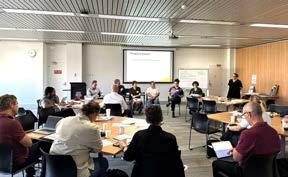
• Directors and senior staff attended the Australian Institute of Aboriginal and Torres Strait Islander Studies (AIATSIS) Summit in Garramilla (Darwin) on Larrakia Country in June 2025.
• Staff attended the
- inaugural AIATSIS Indigenous Country and Governance workshop, where the Research, Country and Culture Services (RCCS) Manager also presented; and
- Centre for Native Title Anthropology (CNTA) conference in Brisbane in February 2025, where the RCCS Manager and a Senior Anthropologist presented on separate matters.
Ranger Coordinator, Jake Muller, shows YMAC staff how to locate mole holes during Cultural Awareness Training on Nyangumarta Country (image: Tash Gillespie).
YMAC staff providing updates on various projects at the March 2025 PBC CEO Roundtable held in Perth (image: Heather Dowling).
Strategic
Priority 3: Fostering a culture of connection across and beyond YMAC
Our two annual On-Country meetings – the On-Country Bush Meeting at Yule River held in July, and Yamatji On-Country held in September – are going from strength to strength. These meetings bring First Nations people together from across each region for two days of discussion and community leadership on key issues, guiding the content of the resulting calls to action documents and other advocacy undertaken in the period.
The 2024 Yamatji On-Country included continuation of the event’s successful youth program, directly engaging Yamatji First Nations young people in advocacy on issues affecting them, and providing opportunity for leadership and connection with community and each other. YMAC is proud to have contributed to the growth of the incredible young people involved, including Trevor Farrell, a Yued Wilunyu participant, who was named a finalist for the 2025 National NAIDOC Youth of the Year Award.


Other projects:
• Joined the WA Better by Nature Alliance alongside the Conservation Council of WA, the WA Forest Alliance, Bush Heritage Australia, the Wildflower Society of Western Australia, Pew Charitable Trust, and 30 by 30. The Alliance works towards protecting WA’s unique biodiversity through expanding and strengthening our network of parks and protected areas.
• Presented a NAIDOC Week Elders’ Morning Tea in Carnarvon in July 2024, and hosted information stalls at NAIDOC Week events in Geraldton, Carnarvon and – for the first time – Perth.
• Participated in several Reconciliation Week events.
• Provided YMAC Community Partnership support for the Carnarvon NAIDOC Ball, NAIDOC events at Cassia Primary School, and the Northern Agricultural Catchments Council’s ‘Reconnect to Country’ project.
• Supported several intern placements across the organisation.
Youth representatives at the September 2024 Yamatji on-Country with YMAC Project Officer, Ken Capewell (image: José Kalpers).
Raylene Button and Danny Brown open the July 2024 On-Country Bush Meeting at Yule River (image: Tash Gillespie).
Strategic Priority 4: Building capacity and mobilising opportunities
Through the State Government’s Plan for our Parks initiative, YMAC supported a number of PBCs in their work caring for Country through negotiations with the program. The program aims to boost Aboriginal Employment, biodiversity conservation, and tourism through joint-vesting arrangements, Indigenous Land Use Agreements (ILUAs), and Joint Management Agreements (JMAs) with PBCs. It has been a great year working with PBCs – firstly as they secured these ILUAs, and then as they expanded their conservation
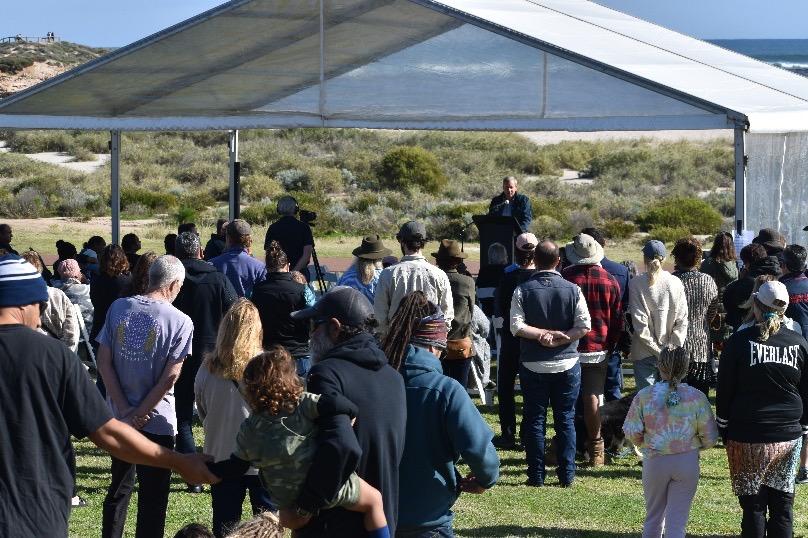
• Successfully supported ranger program delivery and several associated on-Country projects for Nyangumarta, Malgana, and Ngarlawangga.
• Staff presented on YMAC’s new online Renewable Energy Guide to the Federal Government First Nations Engagement Cross-Agency Group in Canberra in September 2024.
• Provided regular updates, notifications, and training opportunities to 36 PBCs/ Aboriginal corporations in our representative regions.

• Supported several complex negotiations between PBCs/Native Title Claim Groups, proponents and government departments.
• Supported the governance processes of nine PBCs and one other Aboriginal corporation through 157 meetings over a total of 233 meeting days.
• Applied for and implemented three grants on behalf of PBC clients to build capacity and protect Country.
Celebration event for the signing of a Nanda ILUA through the Plan for Our Parks initiative (image shared with permission of Nanda Aboriginal Corporation RNTBC (ICN 8871). YMAC also acknowledges Pew Charitable Trusts in producing this image).
Nyangumarta Rangers on Country during a Desert Habitat Method workshop (image: Salty Davenport).
BOARD OF DIRECTORS

Peter Windie
Co-Chairperson, Yamatji Region (Thudgari)

Albert Winder Director, Yamatji Region (Malgana and Yinggarda)

Richard Oakley
Director, Yamatji Region (Malgana)
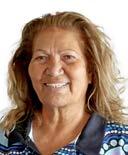
Deborah Oakley
Deputy Co-Chairperson, Yamatji Region (Malgana)

Sharna Oakley Director, Yamatji Region (Malgana)
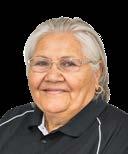
Cicily Dowden Director, Yamatji Region (Wajarri)
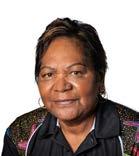
Natalie Parker
Co-Chairperson, Pilbara Region (Nyiyaparli)
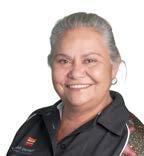
Diane Stewart Director, Pilbara Region (Nyangumarta)

Raylene Button
Director, Pilbara Region (Kariyarra, Yindjibarndi and Palyku)

Doris Eaton
Deputy Co-Chairperson, Pilbara Region (Njamal and Pitjikarli)

Ivan Smirke Director, Pilbara Region (Jurruru)

Terry Jaffrey
Director, Pilbara Region (Palyku)
REGIONAL COMMITTEES AND EXECUTIVE MANAGEMENT TEAM
Yamatji Regional Committee
Peter Windie Chairperson (Thudgari)
Deborah Oakley Deputy Chairperson (Malgana)
Richard Oakley (Malgana)
Cicily Dowden (Wajarri)
Sharna Oakley (Malgana)
Albert Winder (Malgana and Yinggarda)
Ben Roberts (Thudgari)
Gail Bellotti (Naaguja and Malgana)
Wayne Evans (Nanda)
Revel Oakley (Malgana)
Louise Oakley (Wajarri and Malgana) (from November 2024)
Barry Dodd (Wilinyu and Nhanagardi)
Grant Dodd (Wilinyu and Nhanagardi)
Paul Baron (Baiyungu) (Served to November 2024)
Tracey Tonga (Yinggarda, Wajarri and Banjima) (Served to November 2024)
Pilbara Regional
Committee
Natalie Parker Chairperson (Nyiyaparli)
Doris Eaton
Deputy Chairperson (Njamal and Pitjikarli)
Ivan Smirke (Jurruru)
Raylene Button (Kariyarra, Yindjibarndi and Palyku)
Diane Stewart (Nyangumarta)
Terry Jaffrey (Palyku)
Albert Pianta (Ngarlawangga)
Executive Management Team
Simon Hawkins
Chief Executive Officer
Chris Dann Yamatji Regional Manager
Donny Wilson Pilbara Regional Manager
Glenn Archer Principal Legal Officer
Nicholas Kimber
Chief Financial Officer
Amy Usher Research, Country and Culture Services Manager
CORPORATE GOVERNANCE
YMAC’s corporate governance continues to be guided by our Strategic Plan 2021-2025.
The strategic plan covers four Strategic Priority Areas:
1. Deliver on our responsibilities to Traditional Owners, Common Law Holders and Country.
2. Build on a tradition of operational excellence.
3. Foster a culture of connection across and beyond YMAC.
4. Build capacity and mobilise opportunities.
The YMAC Board of Directors meet at least every four months, providing the corporation strategic and priority direction. The Board also actively lead on and contribute to YMAC’s advocacy work on behalf of Traditional Owners in the Yamatji and Marlpa regions, particularly in relation to government policies and development activities affecting Country.
Our Board is accountable to the corporation’s members and ultimately responsible for the performance of YMAC’s statutory functions. The Board is comprised of members from YMAC’s two committees – the Yamatji Regional Committee and Pilbara Regional Committee. The committees are elected to represent their respective region at annual regional meetings. Six members from each committee join to form the twelve-member Board of Directors, providing equal representation for both the Yamatji and Marlpa regions.
During this reporting period, YMAC’s Board of Directors met five times in: August 2024; October 2024; November 2024; February 2025; and May 2025.
Direction for YMAC on matters specific to either the Yamatji or Pilbara region is provided by the respective regional committee. In the 2024-25 Financial Year:
• The Yamatji Regional Committee met in September 2024, November 2024, February 2025, and May 2025.
• The Pilbara Regional Committee met in February 2025, and May 2025.
• Both regional committees held an additional Joint Committee Meeting in May 2025.
YMAC held its Pilbara Annual Regional Meeting on 22 November 2024, and our Yamatji Annual Regional Meeting on 30 November 2024.
Strategy and policy directions are implemented through the day-to-day work of YMAC’s staff, under the direction of the Chief Executive Officer (CEO). YMAC’s 180 staff reflects a diverse range of qualifications and experience, including (but not limited to) law, anthropology, heritage, environmental science, communications/marketing, archaeology, governance, community engagement and development, executive/corporate, land and sea management, and financial and administrative services. Staff regularly travel between our offices in Perth, Geraldton, Carnarvon (to March 2025), Hedland and Broome to deliver services.
Regular reporting by YMAC’s CEO and the Executive Management Team (EMT) to the Board, regional committees, stakeholders, management and funders ensures YMAC’s strategic direction is maintained – and that risks are identified and managed appropriately.
Malgana Country (image: José Kalpers).

Yamatji Marlpa
Accountability and Responsibility
Accountablity
YMAC Members vote in Yamatji and Pilbara Regional Committee representatives
The BoD is elected via Regional Committees. They are accountable to YMAC Members.
Board of Directors (BoD)
CEO maintains ‘separation of power’
Responsibility
YMAC priorities are identified via Members through community feedback.
The BoD makes policy and sets strategic direction.
The CEO reports to the BoD through YMAC Co-Chairs.
The EMT reports to CEO. Managers report to EMT or CEO.
Staff report to Managers or EMT
Chief
Executive Officer (CEO)
Executive Management Team (EMT) / Managers
The CEO leads implementation of policy and strategic directions, and oversees operations.
The EMT manages operations, and implements policy and strategic direction.
Staff have an ‘operational’ focus.
YMAC Members
Yamatji Marlpa
CORPORATE AND OPERATIONAL PERFORMANCE
In addition to what is described in our Strategic Plan 2021-2025, to ensure we consistently meet our member and client objectives, YMAC is governed by a series of frameworks.
YMAC’s financial management system requires regular reporting that meets statutory requirements, including the Native Title Act 1993 (Cth) (NTA), the Corporations (Aboriginal and Torres Strait Islander) Act 2006 (Cth) (CATSI Act), and all tax and other relevant state and federal legislation. The organisation also adheres to Australian Accounting and International Financial Reporting Standards.
YMAC acknowledges ongoing grant support from the Federal Government to provide essential support to claim groups and Prescribed Bodies Corporate (PBCs) for the 2024-25 Financial Year. This funding will significantly contribute to providing essential services and support to clients while providing job security for employees.
Western Australia continued to experience a strong growth rate over the period supported by a lift in exports across a range of mining commodities, along with agricultural exports. This growth continues to impact on the availability of staff and in particular the availability of suitably qualified professionals, significantly impacting on the cost of employment and the critical need to retain staff.
Furthermore, reliance on National Indigenous Australians Agency (NIAA) funding streams, as well as the impacts of inflation and supply chain issues and global uncertainty, present challenges going forward. In the face of all these challenges, YMAC continues to provide a stable, flexible, and exceptional working environment employing an outstanding and diverse workforce.
The past financial year has been a very busy period. Strong revenue from services, along with support from the Federal Government and high levels of productivity, have resulted in improved revenue figures for YMAC. In 2024-25, revenue has risen to over $28 million, an increase of over 9% for the period. This has also translated into an improvement in the bottom line, with the organisation recording a small operating surplus for the period.
Despite the high costs in employment and the impacts of inflation, the organisation has performed well. Effective management over several years has ensured that the organisation’s Balance Sheet remains strong. This, combined with efforts to retain high quality staff, will stand the organisation in good stead to meet the challenging future ahead.
YMAC’s Executive Management Team (EMT), with support of the Board of Directors, will continue to be proactive in planning for uncertainty to ensure risks and costs are contained, opportunities are able to be explored, and morale is maintained.
Staff and salaries
From 1 July 2024 to 30 June 2025, YMAC employed 180 staff.
Full-time: 96
Part-time: 36
Casual: 48
Aboriginal: 74
Non-Aboriginal: 106
Staff turnover for this period was 12.22%. The twelve-month average employee turnover rate in Australia to the end of March 2025 was 16% (AHRI).
The salary structure is updated on 30 September each year with an increase commensurate with the Consumer Price Index (CPI).
Development and training
YMAC staff and directors undertook several internal and external training and other professional development opportunities, including (but not limited to):
• On-Country Cultural Awareness Training held in July/August 2024
• All Staff Conference in February 2025
• Staff inductions
• Board of Directors training
• AIATSIS Summit in June 2025
• First Nations Land and Water Management Forum
• First Nations and The Energy Transition Forum
• Five training sessions (funded by the Australian Government’s Attorney-General’s (AG’s) Department and delivered by YMAC)
• Required (and beyond) Continued Professional Development (CPD) workshops and courses for YMAC legal team members and others
• Online learning management system ‘Go1’
• Grant writing training
• Health and safety representative training
• Remote first aid and first aid refreshers
• 4WD training
Consultancy services
In the 2024-2025 Financial Year, YMAC engaged more than 200 consultants and contractors to undertake work at a cost exceeding $5 million across a range of service areas.
YMAC performance review
During the reporting period, YMAC participated in a performance review undertaken on behalf of the National Indigenous Australians Agency (NIAA) by the Nous Group.
The review focussed on YMAC’s activities and achievements between 1 July 2019 and 30 June 2022. The resulting report is yet to be released by NIAA.
Organisational planning
YMAC’s Strategic Plan 2021–2025, endorsed in December 2020, has continued to inform an effective approach to the development of Annual Business Plans for all teams and regional offices.
As 2025 marks the final year of the current plan, YMAC began consultation and planning for our next strategic plan (to focus 2026 through 2030) during this reporting period. This has included an extensive consultation process, with opportunities for input and feedback offered to YMAC Members, Directors, Regional Committee Members, PBCs and Aboriginal corporations, staff, external partners, NIAA, and other external stakeholders.
Complaints
Formal complaints to YMAC are addressed pursuant to the organisation’s policies and procedures, available at ymac.org.au.
During the reporting period, YMAC registered and resolved four formal complaints.
POLICY, ADVOCACY, AND COMMUNITY ENGAGEMENT
Aligned to our Strategic Plan 2021-2025, YMAC is active in both creating and responding to advocacy opportunities on a wide variety of issues which affect First Nations people in our representative regions. We aim to raise awareness and recommend policy positions and solutions that will best support Traditional Owners, Prescribed Bodies Corporate (PBCs) and associated corporate entities.
This work is carried out in a range of ways, such as:
• Writing submissions.
• Providing in-person submissions, including meeting with Ministers.
• Issuing media statements.
• Hosting information sessions and other forums/events.
• Consulting with those we work with and on behalf of, and participating in consultations on their behalf.
• Having representation on committees, advisory groups, and similar.
• Promoting opportunities for Traditional Owners to directly engage in, and provide input to, consultations and submissions.
• YMAC’s Community Partnerships.
• Partnering with others through our memberships, e.g. National Native Title Council (NNTC), First Nations Heritage Protection Alliance (FNHPA), etc.
Two of YMAC’s key objectives relating to policy, advocacy, and community engagement in our Strategic Plan 2021-2025 are to:
• Influence policy-makers and drive the organisation’s advocacy and reform agenda.
• Promote a learning culture with a focus on developing capacity and shared knowledge.
Staff at the YMAC information stall during the 2024 NAIDOC Week Opening Ceremony in Perth (image: Brandon Stockbridge).

Yamatji
Key policy, advocacy, and community engagement highlights
6-13 July 2024
Participated in various NAIDOC Week events. YMAC hosted an Elders Morning Tea in Carnarvon, and stalls at public NAIDOC events in Carnarvon, Geraldton, and for the first time, Perth.
24-25 July 2024
Organised 9th Annual On-Country Bush Meeting at Yule River (and supported ongoing Call to Action advocacy work arising from the meeting, including working with the Yule River Call to Action Working Group).
19 August 2024
Staff participated in the Productivity Commission’s webinar on the Closing the Gap Dashboard and Annual Data Compilation Report 2024.
22 August 2024
Provided Community Partnership support for Carnarvon NAIDOC Ball, held on Saturday 5 October 2024 (requested by Gascoyne Community Services Aboriginal Corporation).
4-5 September 2024
Organised 4th Yamatji On-Country (and supported ongoing Call to Action advocacy work arising from the meeting, including involvement in the Mid West Aboriginal Organisations Alliance (MAOA)).
9 September 2024
YMAC-initiated meeting of staff and representatives from the Australian Law Reform Commission (ALRC) about its ‘Review of the Future Acts Regime’.
26 September 2024
Chief Executive Officer (CEO), Principal Legal Officer (PLO) and Communications Manager presented on the YMAC Renewable Energy Guide to the Federal Government First Nations Engagement Cross Agency Group.
26 September 2024
Wrote to then-WA Minister for Police and the WA Commissioner of Police about the effect of the Firearms Act 2024 (WA) on Native Title Holders’ and Registered Native Title Claimants’ right to hunt on Country.
Following the 2024 On-Country Bush Meeting at Yule River and Yamatji On-Country meetings, YMAC coordinated updates and publishing of the calls to action arising from each of these meetings (including incorporating and updating links to the National Agreement on Closing the Gap) and shared them with key stakeholders (including government agencies and State and Federal ministers) in November 2024.
Financial support through a variation in funding from the NIAA supported YMAC to employ a dedicated Calls to Action Project Officer to May 2025. This enabled dedicated support towards the increased monitoring, liaison, engagement and advocacy work resulting from the calls to action. It also included secretariat support to the Yule River Call to Action Working Group and support to the the Midwest Aboriginal Organisations Alliance specific to the Yamatji on-Country Call to Action. YMAC is seeking a continuation of this funding while each region establishes/confirms appropriate governance and leadership arrangements on the respective calls to action.
The annual On-Country Bush Meeting at Yule River, held in July 2024 (image: Tash Gillespie).
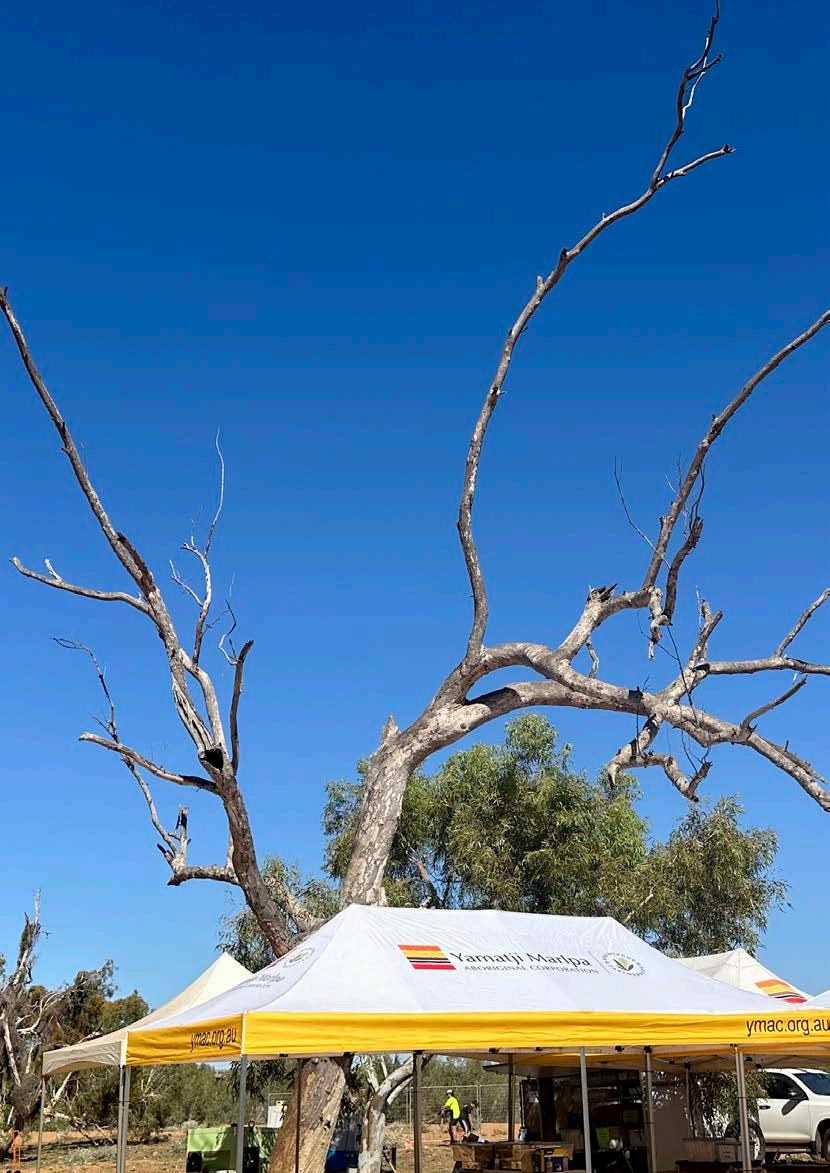
Yamatji
8 October 2024
Provided a written response to the Australian Human Rights Commission (AHRC) call for submissions to its Informing the Agenda consultation, focussing on both on-Country meetings’ Calls to Action and Closing the Gap.
November 2024 Board of Directors participated in Wadjemup Wirin Bidi, a ceremonial week to carry out Sorry Business and commemorate the history of Wadjemup (Rottnest Island).
November 2024
Finalised Yule River Call to Action and Solutions Roadmap and Yamatji On-Country Call to Action and Meeting Report, and distributed to community, government and other key stakeholders.
19 November 2024
Contributed a written submission to the Environmental Protection Authority (EPA) in support of Yindjibarndi Aboriginal Corporation’s concerns about the impacts of water extraction from Millstream Aquifer on environmental features and cultural heritage at Millstream Chichester National Park.
6 December 2024
CEO attended launch
O f the First Nations Clean Energy Strategy 2024-2030 in Adelaide, presented by the Federal Minister for Climate Change and Energy, Hon Chris Bowen MP.
18 February 2025
Hosted an ALRC consultation for PBC directors and staff from YMAC’s representative regions to provide direct input to the ‘Review of the Future Acts Regime’ team.
4 March 2025
Co-Chairperson –Yamatji Region and Deputy Co-Chairperson –Pilbara Region, and senior management attended official launch of the Mabo Centre in Boorloo (Perth).
7 March 2025
Hosted our second PBC CEO Roundtable, to provide updates on YMAC’s current work and what is happening in native title and related sectors, as well as support invaluable information and knowledge-sharing amongst attendees.
11 March 2025
Wrote to WA Commissioner of Police to acknowledge their response to YMAC’s concerns raised about the Firearms Act 2024 (WA), noting we would continue to monitor impacts on Traditional Owners and share information as appropriate.
13 March 2025
Provided Community Partnership support for Northern Agricultural Catchments Council (NACC) Reconnect to Country Project.
7 April 2025
WA Better by Nature Alliance, of which YMAC became a member in October 2024, officially launched its campaign.
7-8 April 2025
Participated in the 2025 Native Title Strategic Issues Forum (NTSIF) held in Adelaide.
10 April 2025
Co-Chairperson – Yamatji Region, CEO and senior staff met with WA Minister for Police and other government representatives to discuss ongoing concerns regarding the Firearms Act 2024 (WA) and related regulations. (Noting, this meeting was followed up, in writing, to outline practical recommendations to be undertaken by WA Police to improve community understanding and navigation of the new laws, etc.).
21 May 2025
Senior staff representation at Boorlo (Perth) event hosted by the new Federal Minister for the Environment and Water to discuss water issues.
26 May - 3 June 2025
Organised and participated in various Sorry Day and Reconciliation Week events.
27 May 2025
Hosted a community consultation workshop for Yamatji On-Country Call to Action Statement in Carnarvon.
30 May 2025
Provided Community Partnership support for NAIDOC Week celebrations (requested by Cassia Primary School in 2023-2024 and deferred to 2024-2025 at recipient’s request).
5 June 2025
Contributed to the WA Better by Nature campaign ‘World Environment Day’ advertorial published in The West Australian.
2-6 June 2025
YMAC Directors and staff attended the 2025 Australian Institute of Aboriginal and Torres Strait Islander Studies (AIATSIS) Summit in Garramilla (Darwin) on Larrakia Country. (Noting, First Nations representatives in attendance also took part in a ‘National Gathering’ workshop, ahead of this event set to take place in September 2025.)
17 June 2025
YMAC Director and staff met with the newlyappointed WA Minister for Aboriginal Affairs to talk about First Nations advocacy in YMAC’s representative regions.
17 June 2025
Organised and hosted a webinar on the Aboriginal Lands Trust (ALT) for PBC directors and staff to hear directly from WA Department of Planning, Lands and Heritage (DPLH) staff on its current work, policies, approaches, initiatives, activities, etc.
26 June 2025
YMAC staff met with the National Native Title Tribunal (NNTT) to consult on its Native Title and Cultural Heritage Processes Review.
Further to this, YMAC Directors and staff have also represented the corporation on various boards, advisory bodies, committees or similar in an ongoing capacity. These include (but are not limited to) NNTC, FNHPA, MAOA, Pilbara Aboriginal Corporations and Enterprises (PACE), the Council of Aboriginal Services Western Australia (CASWA), the national Sea Country Alliance, and more.
Publications and information resources
YMAC is pleased to have, this past year, contributed to the pending State Government’s Setting up for Success: Clean Energy Guide, which we understand will be published in the latter half of 2025. Additionally, we created and/or updated and distributed our own print and digital publications and guides for members, clients, stakeholders and the broader community for informational and educational purposes, and to support advocacy, including:
• Two editions of YMAC News.
• Eleven editions of our PBC eNews, plus a ‘Welcome to 2025’ letter to all PBCs outlining YMAC’s NTRB and corporate services, and planned events.
• Four native title claim updates.
• Eleven YMAC media statements.
• New Family History Resources fact sheet.
• New YMAC Capability Statement
• Two new information guides: Quick Guide for Registered Native Title Bodies Corporate on the Firearms Act 2024 and How Registered Native Title Bodies Corporate register, and issue permissions, under the Firearms Act 2024 (WA).
The above is in addition to YMAC’s other regular updates shared, including website announcements and content updates, emails alerts, LinkedIn posts, and so on.
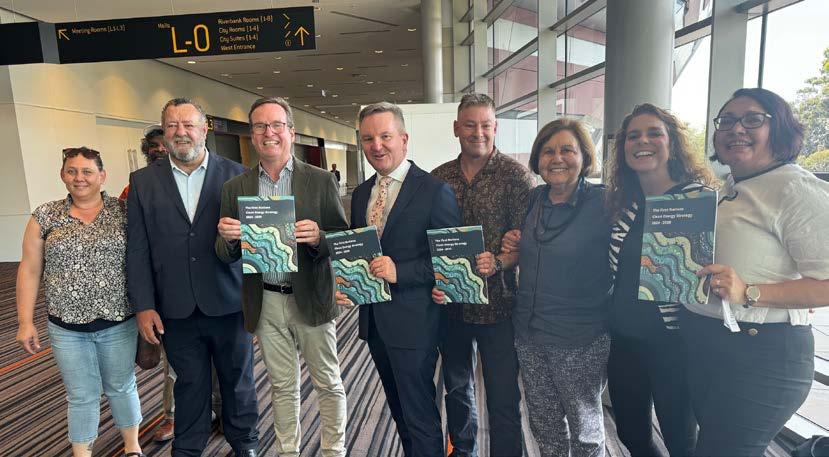
Below: YMAC CEO Simon Hawkins (third from left) with the Federal Minister for Climate Change and Energy Hon Chris Bowen MP and members of the First Nations Clean Energy and Climate Change Advisory Committee (FNCECCAC) at the launch of the First Nations Clean Energy Strategy 2024–2030 in December 2024.
Right: Nanda Country (image: José Kalpers).

Yamatji Marlpa
NATIVE TITLE ROLES AND FUNCTIONS
YMAC is the Native Title Representative Body (NTRB) for the Traditional Owners of the Geraldton (Yamatji) and Pilbara (Marlpa) Representative Aboriginal/ Torres Strait Islander Body (RATSIB) areas of Australia.
Our service provision focuses on the Mid West, Murchison, Gascoyne and Pilbara regions of Western Australia (WA). As an NTRB, YMAC operates under the Native Title Act 1993 (Cth) (NTA) and the Corporations (Aboriginal and Torres Strait Islander) Act 2006 (Cth) (CATSI Act).
YMAC functions determined under the NTA include:
• Facilitation and assistance functions referred to in sections 203BB and 203BC.
• Certification functions referred to in section 203BE.
• Dispute resolution functions referred to in section 203BF.
• Notification functions referred to in section 203BG.
• Agreement-making functions referred to in section 203BH.
• Internal review functions referred to in section 203BI.
• Other functions referred to in section 203BJ, and such other functions as are conferred on representative bodies by the act.

Nyangumarta Country (image: Mark Jones).

Yamatji
LEGAL
In addition to our invaluable support staff, YMAC’s Legal team includes lawyers who provide native title and other relevant legal advice and representation to our clients.
In its work, YMAC’s Legal team is primarily responsible for the organisation discharging its Native Title Representative Body (NTRB) functions under the Native Title Act 1993 (Cth) (NTA) (see page 27), which includes the preparation, filing and progression of native title claims in the Federal Court.
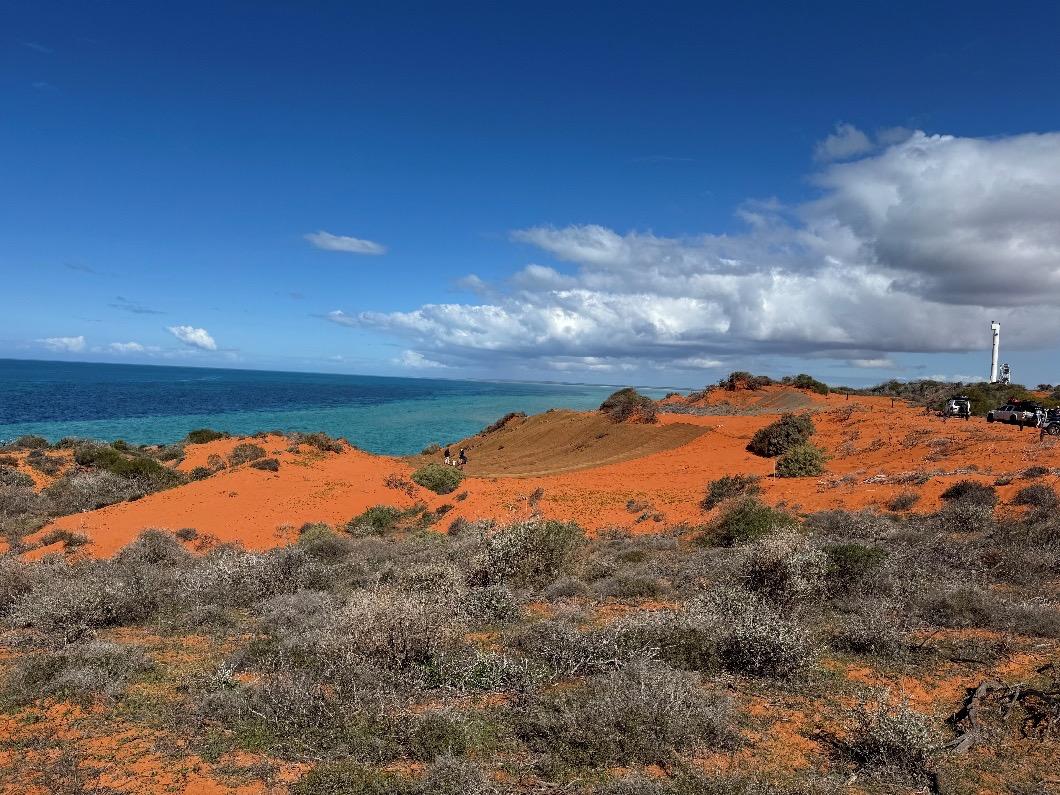
Malgana Country (image: Natasha Cameron).
In relation to both claimed and determined areas, YMAC’s Legal team can assist with responding to future act notices, negotiating agreements, including Indigenous Land Use Agreements (ILUAs), as well as all other native title legal services as requested and agreed.
As Traditional Owner groups transition from native title claims to Registered Native Title Bodies Corporate (RNTBCs) – commonly referred to as Prescribed Bodies Corporate (PBCs) – YMAC’s Legal team can also assist with governance (providing advice and support via our PBC Executive Office team), as well as preparing, lodging and progressing compensation applications.
Further, YMAC’s Legal team assists the Research team with advice relating to the Return of Materials (RoM) process following native title determinations, and it can support other YMAC teams in relation to land tenure issues, as well as managing the NTRB notification function process within YMAC.
Native title claims represented by YMAC
During the reporting period, the YMAC Legal team filed two new claims over previously unclaimed areas (and for which YMAC lawyers are the solicitor on the record):
• Badimia Barna – filed 12 September 2024; registered 14 November 2024.
• Nhuwala – authorised 23 November 2024; filed 18 December 2024; registered 11 April 2025.
The YMAC Legal team also continued to progress the resolution of outstanding native title claims as follows:
• After a successful application for summary judgment to dismiss the Mullewa Wadjari overlapping claim (published on 24 September 2024) – in which YMAC lawyers acted on behalf of the Applicant in Wajarri Yamatji #1, #3 and #7 and the Applicant in Nanda People and Nanda People #3 – YMAC undertook the necessary preparations to facilitate the final Wajarri Yamatji and Nanda Native Title Claims being determined on 13 February 2025 at a combined Federal Court hearing and ceremony held in Geraldton.
• Following unsuccessful mediation efforts with the Ngarluma People (Mallina Native Title Claim) (which failed the registration test on 30 August 2024), in March 2025, the Kariyarra Pirnthurruna Native Title Claim (which YMAC represents, and was accepted for registration on 15 March 2024) was programmed to go to trial. The first hearing (being for Aboriginal evidence) is listed for December 2025, for which YMAC is currently preparing.
Native title compensation claims
YMAC’s Legal team has continued to progress native title compensation claims, including receiving instructions from four PBCs to conduct tenure reviews of compensable acts, review historical documents, and commence the collection of informal preservation evidence in collaboration with the Research team.
Further, YMAC has been an active respondent in the compensation claim brought by Yindjibarndi Ngurra Aboriginal Corporation RNTBC (YNAC) against the State Government and Fortescue Metals Group in WAD37/2022 Yindjibarndi Ngurra Aboriginal Corporation RNTBC and State of Western Australia & Ors. This work has included YMAC making submissions to the Federal Court in a matter that is an important, potentially precedentsetting, test case in relation to compensation for non-extinguishing acts such as mining leases.
Unclaimed areas
The YMAC Legal and Research teams continue to progress investigations into native title recognition in unclaimed areas within our areas of responsibility. These include:
• the unclaimed region between the Nyamal, Nyangumarta and Ngarla (NNN) determination areas;
• the Peedamulla-Cane River (PCR) area east of the Nhuwala claim;
• Pullcanah Hill;
• the Lake Barlee area; and
• Lake Mason/Black Range (formerly known as Northern Sandstone).
Native title claims not represented by YMAC
The following claims within YMAC’s RATSIB areas are not legally represented by YMAC:
• Gingirana #4;
• Jidi Jidi Aboriginal Corporation RNTBC revised determination application;
• Marlinyu Ghoorlie;
• Ngarluma People (Mallina Native Title Claim);
• Yugunga–Nya and Yugunga –Nya #2; and
• Yindjibarndi Ngurra Aboriginal Corporation RNTBC Compensation Claim.
NTRB notification process
The NTRB notification process ensures notices received by YMAC are brought to the attention of relevant Native Title Parties. In the 2024-25 Financial Year, there was a total of 282 NTRB notices, which were all processed within the required timeframes.
Future acts – negotiated matters
During the reporting period, YMAC’s Legal team assisted clients with:
• Execution of two s91 licence (under the Land Administration Act 1997 (WA)) agreements for feasibility studies for hydrogen projects.
• Execution of a renegotiated mining agreement, which substantially increased the royalty payments payable to the relevant PBC and provided improved heritage protections.
• Progressing engagement with a range of renewable energy proponents, tourism projects, mining, infrastructure and other heritage and miscellaneous matters.
• Progressing matters with carbon farming project proponents, including a carbon farming agreement finalised and executed in relation to a pastoral property.
Future acts – managing expedited procedure
• Progressing negotiations about the proposed extinguishment of native title over a large area of land in a major town for residential development, which is close to reaching in-principle agreement.
• Progressing negotiations for the proposed creation of a waste facility.
• Following changes to the Native Title (Prescribed Body Corporate) Regulations 1999 (Cth), YMAC has continued to assist our PBC clients with developing certificates to comply with Regulation 9 in relation to native title decisions.
• Provided future act training to PBCs in YMAC’s RATSIB areas.
YMAC’s Legal team assisted clients with various National Native Title Tribunal (NNTT) inquiry matters and requests for the expedited procedure statement to be removed from tenement applications. This action enabled clients to enter into a right-to-negotiate process, or resulted in proponents withdrawing their applications, for matters that were located in culturally sensitive areas. During the reporting period:
• 110 objections were lodged.
• 54 heritage agreements were negotiated and executed.
• One matter progressed to inquiry.
• The State Government withdrew the expedited procedure statement on request by YMAC in relation to a tenement overlapping a significant area.

Plan for Our Parks
In the 2024-2025 Financial Year, two YMAC PBC clients finalised ILUAs under the State Government’s Plan for Our Parks project.
The ILUAs between the Western Australian Department of Biodiversity, Conservation Attractions (DBCA) and relevant PBC comprise Joint Management Agreements (JMAs) to govern joint vesting and joint management arrangements for national parks and conservation estates in the relevant determination areas.
The two ILUAs are:
• Nganhurra Thanardi Garrbu Aboriginal Corporation RNTBC (NTGAC) and DBCA – ILUA authorised 14 February 2024 and registered on 2 September 2024.
• Malgana Aboriginal Corporation RNTBC (MAC) and DBCA ILUA executed 21 June 2024; registered 3 October 2024.
Renewable energy projects
Renewable energy projects and associated activities must comply with future act and other requirements under the NTA.
YMAC has been a leading advocate in the renewable energy sector through our Best Practice Standards and Project Timeline, available on our website at ymac.org.au/renewable-energy.
These standards have been designed to be a shared tool for all parties working in the sector.
YMAC’s Legal team has been active in implementing the Best Practice Standards including, for example, representing (with HWL Ebsworth) Nyangumarta Warrarn Aboriginal Corporation RNTBC (NWAC) in its ILUA negotiations with BP. These negotiations culminated in the authorisation of the Australian Renewable Energy Hub Initial ILUA (Body Corporate Agreement) on 27 November 2024 and registration on 8 April 2025.
Offshore developers
YMAC continues to participate in the national Sea Country Alliance for the purpose of consulting with the offshore oil and gas industry.
For more information, please see the ‘Land and Sea Management’ section of this report (page 39).
Bush Coconut on Njamal Country (image: Anys Price)
GEOSPATIAL
The Geospatial team manages YMAC’s spatial (mapping) data, infrastructure, and service delivery. It provides a range of services to YMAC staff and clients, including map development and analysis services, management of an extensive list of geographic/spatial datasets (internal and external), administering YMAC’s spatial systems and software, and providing related training and advice.
In 2024-25, YMAC’s Geospatial team:
• Completed 330 spatial requests (resulting in the generation of more than 875 individual maps).
• Continued the implementation of the datasets for the storage and management of agreement areas and related exclusion zones associated with mining agreements and the future act process. This work aims to ensure consistency in advice concerning the application of exclusion zone buffers across neighbouring agreements. It is currently being applied to the Ngarlawangga Native Title Determination Area, and will continue to be rolled-out to other groups represented by YMAC for future act services over the next two-years.
• Expanded the use of digital mapping solutions in the field by YMAC staff. For example, iPads utilising the Environmental Systems Research Institute (ESRI) Field Map software were prepared and deployed on ten surveys.
• Conducted 20 introductory training sessions for YMAC staff and external clients on QGIS – a free, open-source geographic information system (GIS) software.
• Completed Remote Pilot Licence (RePL) courses to re-establish drone-flying capabilities within the Geospatial team. This will help to establish future feefor-service offerings, as obtaining these licences is the first stage to acquiring a Remote Operating Certificate (ReOC) for YMAC to be able to fly drones commercially.
YMAC staff member practicing flying a drone at the Remote Pilots Licence Course (image: Tom Paten).

Yamatji
RESEARCH
YMAC’s Research team of experienced and qualified anthropologists provides a range of services that can be applied to various research contexts, all of which aim to support Traditional Owners and Prescribed Bodies Corporate (PBCs) in our representative regions, both pre- and post-determination.
The Research team works closely with YMAC’s Legal, Land and Sea Management, Heritage, Geospatial and PBC Executive Office teams to assist with claim progression, negotiations, projects and more.
Native title research is an intense process but an important part of the journey to recognition.
The collection of information can take years to gather, analyse and refine, to ensure that as many of the right people as possible are being heard and represented correctly. Key to this work post-determination is YMAC’s nationallyrecognised best practice approach to Return of Materials (RoM). Our approach enables us to ensure the materials collected throughout the claim process are given back in a culturally appropriate way to the rightful owners.
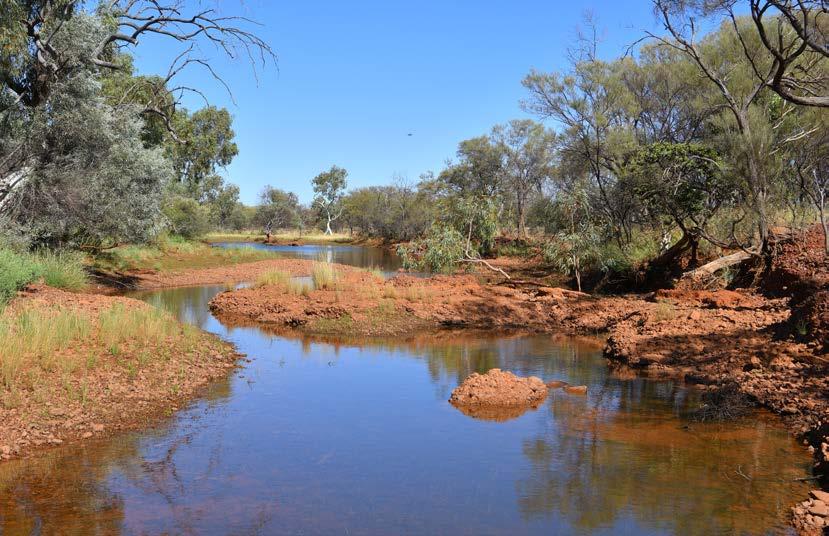
Ngarlawangga Country (image: Mark Jones).
Key research highlights
• Badimia Barna Native Title Claim lodged in September 2024 and registered in November 2024.
• Nhuwala Native Title Claim authorised in November 2024, lodged in December 2024 and registered in April 2025.
• Wajarri and Nanda Native Title Determinations in February 2025.
• Undertook intensive interviews, family consultations, field work and site visits for multiple priority unclaimed areas, and had conversations with the State of Western Australia about claim progression in these areas.
• Delivered several successful codesigned research workshops for unclaimed areas.
• Finalised a number of internal and external reports for complex unclaimed areas.
• Provided high-level future act and exclusion zone advice to PBCs.
• Provided ongoing membership advice to several PBCs.
• Undertook multiple on-Country consultations to progress compensation-related work.
• Continued to support and implement four RoM projects at various stages, including workshops with PBCs and Traditional Owners.
• Gave additional introductory RoM presentations to four PBCs.
• Completed a number of personal returns.
• Audited and updated internal Research processes and procedures.
• Research anthropologists undertook several ethnographic surveys, supporting the Heritage team.
• Increase in the amount of family history enquiries, with over 80 enquires received and responded to successfully.
• Staff attended:
• several Anthropological Society of Western Australia (ASWA) conferences
• the annual Australian Anthropological Society (AAS) conference in November 2024
• the inaugural AIATSIS Indigenous Country and Governance workshop, where the Research, Country and Culture Services (RCCS) Manager also presented
• the Centre for Native Title Anthropology (CNTA) conference in Brisbane in February 2025, where the RCCS Manager and a Senior Anthropologist presented on separate matters.
• Secured funding from the Australian Government’s Attorney-General’s (AG’s) Department to organise, develop content and deliver five training sessions. Topics included ‘Compensation Strategy and Methodology’, ‘Social Surroundings’ and ‘Reviewing Native Title Reports’.
• Partnered with various institutions (e.g. the Aurora Internship Program) to organise intern placements.
LAND AND SEA MANAGEMENT
Land and sea management (LSM) – caring for Country – is one of the most promising and empowering outcomes in the context of self-determination for the Traditional Owners and Prescribed Bodies Corporate (PBCs) YMAC works with.
YMAC’s LSM team – through its diverse and extensive range of expertise, experience and customised services offered – prides itself on providing tailored support and advice to our clients as they navigate and deliver on their unique aspirations when managing such projects, including ranger and Indigenous Protected Area (IPA) programs.
YMAC’s LSM team provides support and services that include (but are not limited to): project administration, management,
and reporting; grant seeking, applications and related reporting; cultural heritage and environmental conservation planning and advice; fieldwork; geospatial (mapping) support; on-the-ground delivery of works; and much more.
In the 2024-25 Financial Year, YMAC’s LSM team provided, amongst other assistance, operational and administrative support to the following groups, projects, and/or initiatives.
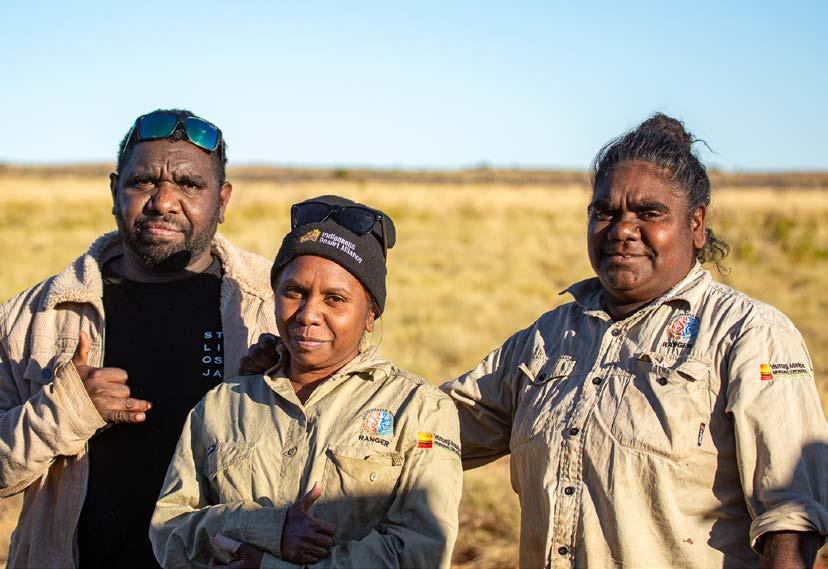
Nyangumarta rangers (image: Mark Jones).
Nyangumarta
This year marks the tenth anniversary since Nyangumarta Warrarn Traditional Owners declared 2.8 million hectares of their desert and coastal Country as an IPA. The rangers and related program continue to grow and develop, with the team now consisting of eight part-time rangers and a new women’s Ranger coordinator. New rangers continue to join the group, and a large base of casual rangers and cultural advisors participate in the program with more flexibility.
Nyangumarta rangers are continuing with their certifications in Conservation and Ecosystem Management through North Regional TAFE, with training often completed on Country. Two rangers completed their Certificate II, and one completed their Certificate III with recognition from Rio Tinto with a leadership award. Fifteen rangers completed a firearm safety training course on Country.
It has been another successful and busy year, with the rangers completing 88% of their ranger work plan and 90% of their IPA work plan, both funded by the Commonwealth through the National Indigenous Australians Agency (NIAA).
YMAC Cultural Awareness Training on Nyangumarta Country
From 29 July to 2 August 2024, Nyangumarta Elders and rangers shared cultural knowledge with over 20 staff from YMAC’s Perth and regional offices. Highlights included a welcome, evening cat spotlighting, talks by Elders, and a visit to a reburial site. YMAC staff also learned about marsupial mole surveys, participated in biosecurity activities and feral animal control on their way to Walyarta, and exchanged stories over convoy radio.
Marine management
The rangers have ramped up their involvement in marine monitoring and management, gaining experience aboard a State Fisheries (DPIRD) vessel. The boat trip involved dropping Baited Remote Underwater Video Systems (BRUVS) in the Eighty Mile Beach Marine Park. These cameras give both the rangers and scientists a glimpse of the sea floor, habitat characteristics, and the marine life at each site. Of significant notice was the change in the marine floor past the ancient shoreline, where the flat featureless sea floor gave rise to seagrass and coral gardens.
Yamatji
Saving Native Species Project
Nyangumarta rangers have continued investigating the locations of threatened species, such as the blackfooted rock-wallaby, finding a new population, and capturing northern quoll on a camera trap. This project has involved three focused trips to deploy additional cameras on rocky outcrops, as well as actively cagetrapping and shooting for cats.
Three Felixers (cat-grooming traps) are on Country until the end of the year as part of the trial to see which combination of management tools are most effective in reducing feral predators. Further field trips are planned for this project, with a film currently under production to document the trips. The project is expected to finish by the end of March 2026.
Cane Toad Project
With each wet season and rain, cane toads continue their march west, currently two years away from Broome. The Toad Containment Zone (TCZ) Project is ramping up, with two workshops held this past year: one at Yawinya (Anna Plains Station), and one in Broome. These workshops brought together all partners involved, including Nyangumarta and Karajarri, pastoralists, Curtin and Deakin Universities, Rangelands Natural Resource Management (NRM), and industry.

Contributions to Western Science
Nyangumarta rangers have also been involved in native bee surveys in Walyarta, along with the Western Australian Department of Biodiversity, Conservation and Attractions (DBCA); collecting three species never before identified or classified. More analysis and fieldwork are scheduled for next year.
Further, the rangers have been cited in six journal articles in the last twelve months, including their work with Central Queensland University (CQU) on wartaji (dingo) research.
This project also has upcoming field trips to catch wartaji and place GPS collars on them to better understand their movements, interactions with cats and foxes, and distribution across the Nyangumarta IPA.
Wallaby on Nyangumarta Country (image: Mark Jones).
Exchanges, interns and workshops
This past year, Nyangumarta rangers participated in two exchanges, visiting both Tiwi (in the Northern Territory) and Mapoon (in Queensland) rangers. The Tiwi visit focused on sharing knowledge and techniques as part of their project on feral animal (cats) control and monitoring of threatened species. The rangers assisted in night spotlighting, deploying cameras, servicing Felixers, and fire management on the island. The rangers also participated in a Tiwi sea patrol for biosecurity, and learned about their marine team and conducting marine operations.
The women’s ranger team flew to Mapoon to participate in four days of marine debris clean-ups. In total, the Mapoon and Nyangumarta rangers, Tangaroa Blue Foundation, and volunteers (including police, Border Force, Army, Metro Mining, and Rio Tinto) collected 4.29 tonnes of rubbish and filled 13 1000L bags of plastic bottles. The team was also shown how to set up transects, identify seagrass species, and record data for the Seagrass Monitoring Method (for James Cook University (JCU)). The women represented Nyangumarta extremely well throughout the week, and are already in talks to reciprocate by hosting Mapoon rangers in 2026.
Nyangumarta rangers also hosted interns from the Indigenous Desert Alliance (IDA), as well as one from the Aurora Internship Program. The IDA identified Nyangumarta rangers as an ideal host to assist in recruiting a new coordinator to the desert ranger sector. The interns participated in everything the rangers did on Country, acquiring a great glimpse of the work undertaken and the challenges faced in working in remote areas. They also experienced important IPA advisory meetings and work planning challenges.
In recognition of Nyangumarta rangers’ knowledge and contribution to conservation, land management, and science increases, they have attended, participated, and presented at 13 workshops/conferences nationally and regionally in the last twelve-months. Further, three female rangers were selected to participate in a leadership trip to Melbourne (with support from IDA and Thin Green Line), sharing their work and presenting to different ranger, government, and school groups along with two other female desert ranger teams.
Malgana
Since April 2024, YMAC has been providing support services to Malgana Aboriginal Corporation RNTBC (MAC), strengthening the delivery and impact of its ranger program in the Shark Bay area.
MAC’s ranger program continues to evolve, providing cultural, environmental, and economic empowerment for the wider Malgana community.
MAC has a funding agreement with the State Government (funded through its Aboriginal Ranger Program (ARP)), as well as various partnerships with other stakeholders, such as the Commonwealth Scientific and Industrial Research Organisation (CSIRO) and Rangelands NRM.
YMAC supports MAC in these endeavours by running daily operations, as well as reporting to its Board of Directors, who are providing high-level supervision over the program.
During the reporting period, a number of important milestones were achieved:
• Successful completion of the third phase of the project ‘Pathway to a Malgana Country Land and Sea Management Program’ (Round 5 of the ARP), and start of the fourth phase of the project (Round 7 of the ARP).
• Recruitment and retention of eight rangers and cultural advisors for the implementation of LSM activities.
• Recruitment of a Ranger Coordinator in July 2024, bringing enhanced leadership and operational oversight to the program.
• Participation in the First Nations Land and Sea Management Forum (Dangkal Gwo’yal-wa), held on Larrakia Country (Darwin) in August 2024.
• Successful implementation of a large fee-for-service contract for Rangelands NRM, focusing on erosion control and habitat restoration of several important sites located on Hamelin Reserve, a property owned and managed by Bush Heritage Australia (BHA).

Malgana’s ranger program continues to benefit from the consistent involvement of several cultural advisors, whose deep knowledge and guidance ensure that all activities remain culturally grounded and community focused. Its rangers, drawn from a pool of Malgana people, have actively participated in a range of accredited and practical training initiatives, including Certificate III in Conservation and Ecosystem Management (facilitated by Central Regional TAFE), fire management training, drone operation training, marine flora and fauna identification, as well as remote first aid certification and mental health first aid.
Stakeholder engagement has also been a key focus, with relationship-building efforts yielding tangible outcomes.
Notably, several smaller fee-for-service opportunities have emerged, reflecting growing confidence in the program’s capabilities, and opening up promising avenues for future collaboration. This can be seen with the program taking part in a pioneering environmental initiative – a Celium trial facilitated by BHA. This involvement underscores the program’s commitment to innovation and ecological stewardship, positioning the Malgana community at the forefront of cutting-edge conservation practices. Further, Malgana’s ranger program has expanded its scientific and ecological engagement through partnerships with universities. These collaborations support marine studies focused on key species and ecosystems, including tiger sharks, dugongs, sea turtles, and seagrass habitats.
Malgana Rangers during fire management training (image: Annie Letich for Bush Heritage Australia).
Ngarlawangga
During the 2024-25 Financial Year, YMAC’s LSM team assisted Ngarlawangga Aboriginal Corporation RNTBC (NAC) in their involvement with the Pilbara Ranger Network (PRN), including through field trip coordination, acquiring new equipment, and representation in the network. The PRN is a partnership between twelve language groups in the Pilbara, financially supported by Lotterywest, Rio Tinto, BHP, and NIAA.
With the support of the PRN and guided by a highly-regarded ethnobotanist, the LSM team arranged an on-Country field trip with twelve Traditional Owner participants, focusing on Traditional Ecological Knowledge (TEK). Additional plant species and associated knowledge collected on the trip will contribute to NAC’s ongoing TEK project, with the aim of compiling the knowledge shared into a booklet for Ngarlawangga people.
Further, YMAC’s LSM team continued to support NAC in their ambition to develop a Healthy Country Plan as a roadmap for the next ten years, through the State Government’s ARP and Rio Tinto funding. Two workshops and one on-Country field trip were carried out during the reporting period, which involved NAC members and Elders. These opportunities for discussion, time on Country, and data collection were integral to drafting the plan. While finalisation of the plan continues, actions to kick-start the programs involved have begun.
TEK Guidance Project
Another innovative initiative YMAC’s LSM team has been supporting NAC with is the development of Traditional Ecological Knowledge (TEK) survey technical guidance. Spearheaded by Vicki Long, an experienced Pilbara ethnobotanist, the project aims to provide clarity and address the lack of consistency and quality in TEK reports being produced, as well as act as a standard framework for the design and scoping of TEK surveys in the context of the Environmental Protection Authority (EPA) Social Surroundings requirement.
In producing the guidelines, the LSM team organised a workshop which was held in Karratha. In attendance were Traditional Owners from ten different Pilbara groups, who shared valuable contributions and raised key questions to consider in the guidelines. The workshop was an opportunity to gather input and feedback from Traditional Owners on what is essential to be included.
The outcomes from this workshop include promoting the adoption of a methodology that respects the principles and values of First Nations communities during the environmental assessment process, while fostering improved engagement between industry proponents and First Nations communities impacted by project developments.
This project is supported by funding from the Western Australian Government’s State NRM Program.
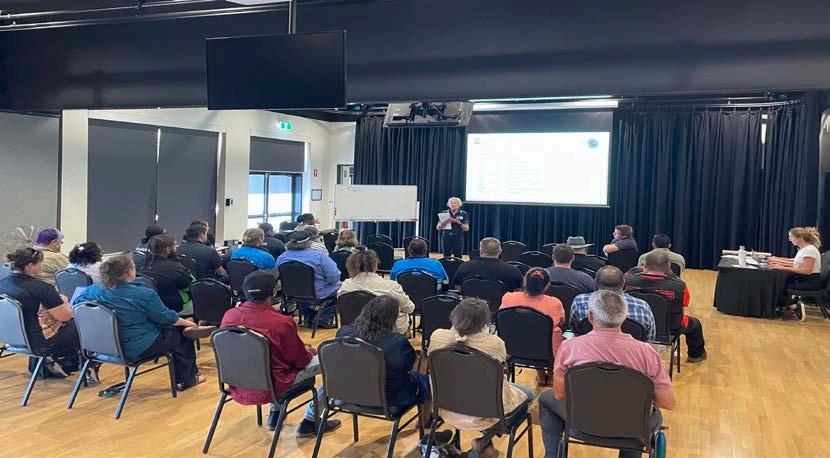
Other
Offshore oil and gas consultations
Recent legislative changes have led to increased consultation requests from offshore oil and gas proponents, which are now required to consult with those whose interests may be affected by such activities.
This process allows stakeholders to raise concerns and suggest changes to Environment Plans before their submission to regulators: i.e., National Offshore Petroleum Safety and Environmental Management Authority (NOPSEMA) for Commonwealth waters; and Western Australian Department of Local Government, Industry Regulation and Safety (DLGIRS) and Western Australian Department of Transport (DoT) for State waters. In response, YMAC’s LSM team has supported groups like Nganhurra Thanardi Garrbu Aboriginal Corporation (NTGAC) and Nhuwala by providing plain-English summaries of potential project impacts; with current efforts focused on streamlining consultations and improving engagement, including developing a customised report with an external consultant.
LSM interns
Two LSM interns in environmental studies (from Curtin University and the Aurora Internship Program) supported research on climate change, nature repair, and environmental policy. They also assisted ranger groups with minute taking, risk assessment reviews, and flora identification from field trips.
Traditional Ecological Knowledge workshop in Karratha (image: José Kalpers).
YMAC’s Heritage team offers a variety of support and services to clients through customised agreements, specifically designed to meet their individual needs and directives.
The team applies its broad diversity of expertise, knowledge and skills to enhance the capacity of Traditional Owners and their Prescribed Bodies Corporate (PBCs) to ensure First Nations people are involved in the governance and stewardship of their cultural heritage, and that they receive the best possible support and advice from YMAC.
Our heritage services include (but are not limited to): coordinating heritage work; assisting in the ongoing protection of sites and cultural heritage; and identifying funding opportunities and managing grant application processes.
YMAC’s Heritage team has observed significant growth during the reporting period, both in the amount of incoming work and types of services being offered.
Some of the team’s highlights for the 2024-2025 Financial Year include:
• Coordinating 57 heritage jobs (including surveys, excavations and monitoring trips).
• Attending 110 meeting days to provide heritage advice in various settings, including PBC meetings, board meetings, heritage committees, and negotiations.
• Providing ongoing management of three ‘Preserve, Promote and Protect Aboriginal Sites’ grants with a total value of $120,000.
• Assisting with a very complex Return of Materials (RoM) project.
• Coordinating three months’ continuous monitoring to ensure proponent compliance throughout ground disturbing works.
• A team member successfully secured a place to present at the 2025 Australian Archaeological Association (AAA) conference on The Heritage Plan: A novel alternative approach to Aboriginal cultural heritage management.
• Providing on-the-job training for new Heritage Officers to ensure clients receive quality advice and support.
• Assisting the Legal team with ongoing reviews of and updates to heritage agreements to ensure best practice and a stronger position for YMAC clients.
PBC EXECUTIVE
This year, YMAC’s PBC Executive Office team continued to deliver high quality services to Prescribed Bodies Corporate (PBCs) and other Aboriginal corporations across our representative regions, enabling them to meet governance obligations, manage heritage responsibilities, and pursue long-term community aspirations.
The team provides tailored executive office services to several PBCs, ensuring compliance with the Corporations (Aboriginal and Torres Strait Islander) Act 2006 (Cth) (CATSI Act), the Native Title Act 1993 (Cth) (NTA), and the Office of the Registrar of Indigenous Corporations (ORIC) requirements. This includes coordinating board and general meetings, lodging reports, maintaining corporate records, and supporting directors to make informed decisions.
Strategic planning has been a significant focus during the reporting period, with several boards supported through facilitated workshops to develop or refresh their vision, mission, values, and strategic goals. These workshops provided a safe and practical environment for directors to contribute ideas, reflect on priorities, and build clear roadmaps for the next three-to five-years.
In addition, the team coordinated PBC governance training in partnership with the National Indigenous Australians Agency (NIAA). This training focused on directors’ governance responsibilities, meeting processes, and practical tools for decision-making.
YMAC’s PBC Executive Office team also continues to provide information on basic support funding and governance assistance at PBC forums, contributes to workshops with other representative bodies to share knowledge and develop good practice approaches, promotes relevant training opportunities, and monitors compliance requirements.
Further, the team coordinates with other YMAC business units, including Legal, Heritage, Research, and Communications to ensure PBCs receive the specialist assistance required to meet obligations and priorities.
Throughout the reporting period, YMAC’s PBC Executive Office team and other units:
• shared updates, notifications, and training opportunities to 36 PBCs/Aboriginal corporations in YMAC’s representative regions;
• directly provided support and services to nine PBCs and one other Aboriginal corporation; and
• provided support for 157 meetings conducted over a total of 233 meeting days, including:
• 86 board meetings
• nine annual and special general meetings
• three Common Law Holder meetings
• 59 workshops and other meetings, including training, strategic planning, consultations, field trips, return of research, subcommittee meetings and community information sessions.
Looking ahead, YMAC’s PBC Executive Office team will continue to adapt to the growing needs of the corporations we work with, with a focus on building capacity, sustainability and self-determination, as well as fostering strong governance cultures to ensure that PBCs are wellpositioned to manage their native title rights for future generations.
INDEPENDENT AUDITOR'S REPORT
TO THE MEMBERS OF YAMATJI MARLPA ABORIGINAL CORPORATION
Report on the Audit of the Financial Report
We have audited the financial report of Yamatji Marlpa Aboriginal Corporation (“the Corporation”) and its controlled entities (“the Consolidated Entity”), which comprises the consolidated statement of financial position as at 30 June 2025, the consolidated statement of comprehensive income, the consolidated statement of changes in equity and the consolidated statement of cash flows for the year then ended, and notes to the financial statements, including a summary of material accounting policies and other explanatory information, and the statement by the Directors , Chief Executive Officer and Chief Financial Officer of the Consolidated Entity, comprising the Corporation and the entities it controlled at the year’s end or from time to time during the financial year.
In our opinion:
a. the accompanying financial report of Yamatji Marlpa Aboriginal Corporation is in accordance with the Corporations (Aboriginal and Torres Strait Islander) Act 2006 , including:
(i) giving a true and fair view of the Corporation’s financial position as at 30 June 202 5 and of its financial performance for the year then ended; and
(ii) complying with Australian Accounting Standards and the Corporations (Aboriginal and Torres Strait Islander) Regulations 2017 and any applicable determinations made by the registrar of Aboriginal Corporations under Division 336 of the Act.
Basis for Opinion
We conducted our audit in accordance with Australian Auditing Standards. Our responsibilities under those standards are further described in the Auditor’s Responsibilities for the Audit of the Financial Report section of our report. We are independent of the Corporation in accordance with the auditor independence requirements of the Corporations (Aboriginal and Torres Strait Islander) Act 2006; and the ethical requirements of the Accounting Professional and Ethical Standards Board’s APES 110 Code of Ethics for Professional Accountants (the Code) that are relevant to our audit of the financial report in Australia. We have also fulfilled our other ethical responsibilities in accordance with the Code.
We believe that the audit evidence we have obtained is sufficient and appropriate to provide a basis for our opinion.
Other Information
The directors are responsible for the other information. The other information comprises the information included in the Corporation’s annual report for the year ended 30 June 2025, but does not include the financial report and our auditor’s report thereon.
Our opinion on the financial report does not cover the other information and accordingly we do not express any form of assurance conclusion thereon.
In connection with our audit of the financial report, our responsibility is to read the other information and, in doing so, consider whether the other information is materially inconsistent with the financial report or our knowledge obtained in the audit or otherwise appears to be materially misstated.
If, based on the work we have performed, we conclude that there is a material misstatement of this other information, we are required to report that fact. We have nothing to report in this regard.
Responsibilities of the Directors for the Financial Report
The directors of the Corporation are responsible for the preparation of the financial report that gives a true and fair view in accordance with Australian Accounting Standards; the Corporations (Aboriginal and Torres Strait Islander) Act 2006 and for such internal control as the directors determine is necessary to enable the preparation of the financial report that gives a true and fair view and is free from material misstatement, whether due to fraud or error.
In preparing the financial report, the directors are responsible for assessing the Corporation’s ability to continue as a going concern, disclosing, as applicable, matters related to going concern and using the going concern basis of accounting unless the directors either intend to liquidate the Corporation or to cease operations, or has no realistic alternative but to do so.
Auditor’s Responsibilities for the Audit of the Financial Report
Our responsibility is to express an opinion on the financial report based on our audit. Our objectives are to obtain reasonable assurance about whether the financial report as a whole is free from material misstatement, whether due to fraud or error, and t o issue an auditor’s report that includes our opinion. Reasonable assurance is a high level of assurance, but is not a guarantee that an audit conducted in accordance with the Australian Auditing Standards will always detect a material misstatement when it exists. Misstatements can arise from fraud or error and are considered material if, individually or in the aggregate, they could reasonably be expected to influence the economic decisions of users taken on the basis of this financial report.
As part of an audit in accordance with the Australian Auditing Standards, we exercise professional judgement and maintain professional scepticism throughout the audit. We also:
• Identify and assess the risks of material misstatement of the financial report, whether due to fraud or error, design and perform audit procedures responsive to those risks, and obtain audit evidence that is sufficient and appropriate to provide a basis fo r our opinion. The risk of not detecting a material misstatement resulting from fraud is higher than for one resulting from error, as fraud may involve collusion, forgery, intentional omissions, misrepresentations, or the override of internal control.
• Obtain an understanding of internal control relevant to the audit in order to design audit procedures that are appropriate in the circumstances, but not for the purpose of expressing an opinion on the effectiveness of the Corporation’s internal control.
• Evaluate the appropriateness of accounting policies used and the reasonableness of accounting estimates and related disclosures made by the directors.
• Conclude on the appropriateness of the directors’ use of the going concern basis of accounting and, based on the audit evidence obtained, whether a material uncertainty exists related to events or conditions that may cast significant doubt on the Corporation’s ability to continue as a going concern. If we conclude that a material uncertainty exists, we are required to draw attention in our auditor’s report to the related disclosures in the financial report or, if such disclosures are inadequate, to modify o ur opinion. Our conclusions are based on the audit evidence obtained up to the date of our auditor’s report. However, future events or conditions may cause the Corporation to cease to continue as a going concern.
• Evaluate the overall presentation, structure and content of the financial report, including the disclosures, and whether the financial report represents the underlying transactions and events in a manner that achieves fair presentation.
• Obtain sufficient appropriate audit evidence regarding the financial information of the Corporation or business activities within the Corporation to express an opinion on the financial report. We are responsible for the direction, supervision and performan ce of the Corporation audit. We remain solely responsible for our audit opinion.
We communicate with the directors regarding, among other matters, the planned scope and timing of the audit and significant audit findings, including any significant deficiencies in internal control that we identify during our audit.
We also provide the directors with a statement that we have complied with relevant ethical requirements regarding independence, and to communicate with them all relationships and other matters that may reasonably be thought to bear on our independence, and where applicable, related safeguards.

LTD

D M BELL FCA Director
Dated at 10th day of October 2025
Perth, Western Australia
HALL CHADWICK WA AUDIT PTY
STATEMENT BY DIRECTORS, CHIEF EXECUTIVE OFFICER AND CHIEF FINANCIAL OFFICER
In our opinion, at the date of this statement, the attached financial statements for the year ended 30 June 2025:
(a) are in accordance with the Corporations (Aboriginal and Torres Strait Islander) Act 2006, including:
(i) giving a true and fair view of the Corporation’s position as at 30 June 2025 and of its performance, for the financial year ended on that date; and
(ii) complying with Australian Accounting Standards (including the Australian Accounting Interpretations) and Corporations (Aboriginal and Torres Strait Islander) Regulations 2017
(b) there are reasonable grounds to believe that Yamatji Marlpa Aboriginal Corporation will be able to pay its debts as and when they become due and payable.
This Statement is made in accordance with a resolution of the Board of Directors.
Doris Eaton Deputy Co-Chairperson YMAC
10 October 2025
Peter Windie Co-Chairperson YMAC
10 October 2025
Simon Hawkins Chief Executive Officer YMAC
10 October 2025
Nick Kimber Chief Financial Officer YMAC
10 October 2025
The above statement should be read in conjunction with the accompanying notes.
Yamatji Marlpa
The above statement should be read in conjunction with the accompanying notes.
Operating Activities
Investing Activities
Financing Activities
CONSOLIDATED
STATEMENT
FOR THE YEAR ENDED 30 JUNE 2025
OF CHANGES IN EQUITY
SCHEDULE OF COMMITMENTS AS AT 30 JUNE 2025
SCHEDULE OF ASSET ADDITIONS FOR THE PERIOD ENDED 30 JUNE 2025
The financial statements cover the consolidated financial statements of Yamatji Marlpa Aboriginal Corporation (YMAC) as a Group. YMAC is an association incorporated under the Corporations (Aboriginal and Torres Strait Islander) Act 2006 (CATSI) with its principal place of business and registered address at Level 8, 12 The Esplanade, Perth WA 6000.
NOTE 1 - SUMMARY OF MATERIAL ACCOUNTING POLICIES
1.1 Basis of Preparation of the Consolidated Financial Statements
The consolidated financial statements are required by clause 1(b) of Schedule 1 to the Commonwealth Authorities and Companies Act general purpose financial statements.
The statements have been prepared in accordance with:
(i) Finance Minister’s Orders (or FMO); and
(ii) Australian Accounting Standards and interpretations issued by the Australian Accounting Standards Board (AASB) that apply for the reporting period.
The consolidated financial statements have been prepared on an accrual basis and in accordance with historical cost convention, except for certain assets at fair value. Except where stated, no allowance is made for the effect of changing prices on the results or the financial position. Amounts shown in these financial statements may not add to the correct sub-totals or totals due to rounding.
Assets and liabilities are recognised in the statement of financial position for not-for-profit report entities when and only when it is probable that future economic benefits will flow to the entity or a future sacrifice of economic benefits will be required and the amounts of the assets or liabilities can be reliably measured. However, assets and liabilities arising under agreements equally proportionately unperformed are not recognised unless required by an accounting standard. Liabilities and assets that are unrecognised are reported in the Schedule of Commitments.
Unless alternative treatment is specifically required by an accounting standard, income and expenses are recognised in the statement of comprehensive income when, and only when, the flow, consumption or loss of economic benefits has occurred and can be reliably measured.
Basis of consolidation
The consolidated financial statements incorporate the financial statements of the Corporation and entities (including structured entities) controlled by the Corporation and its subsidiaries. Control is achieved when the Corporation:
• has power over the investee;
• is exposed, or has rights, to variable returns from its involvement with the investee; and
• has the ability to use its power to affect its returns.
The Corporation reassesses whether or not it controls an investee if facts and circumstances indicate that there are changes to one or more of the three elements of control listed above.
When the Corporation has less than a majority of the voting rights of an investee, it has power over the investee when the voting rights are sufficient to give it the practical ability to direct the relevant activities of the investee unilaterally. The Corporation considers all relevant facts and circumstances in assessing whether or not the Corporation’s voting rights in an investee are sufficient to give it power, including:
• the size of the Corporation’s holding of voting rights relative to the size and dispersion of holdings of the other vote holders;
• potential voting rights held by the Corporation, other vote holders or other parties;
• rights arising from other contractual arrangements;
NOTES TO THE CONSOLIDATED FINANCIAL STATEMENTS
1.1. Basis of Preparation of the Consolidated Financial Statements
(continued)
Basis of consolidation (continued) and any additional facts and circumstances that indicate that the Corporation has, or does not have, the current ability to direct the relevant activities at the time that decisions need to be made, including voting patterns at previous members’ meetings.
Consolidation of a subsidiary begins when the Corporation obtains control over the subsidiary and ceases when the Corporation loses control of the subsidiary. Specifically, income and expenses of a subsidiary acquired or disposed of during the year are included in the consolidated statement of profit or loss and other comprehensive income from the date the Corporation gains control until the date when the Corporation ceases to control the subsidiary.
Profit or loss and each component of other comprehensive income are attributed to the members of the Corporation and to the non-controlling interests. Total comprehensive income of subsidiaries is attributed to the members of the Corporation and to the noncontrolling interests even if this results in the non-controlling interests having a deficit balance.
When necessary, adjustments are made to the financial statements of subsidiaries to bring their accounting policies into line with the Group’s accounting policies.
All intragroup assets and liabilities, equity, income, expenses and cash flows relating to transactions between members of the Group are eliminated in full on consolidation.
1.2. Revenue
Revenue is measured when or as the control of the goods or services is transferred to a customer. Depending on the terms of the contract and the laws that apply to the contract, control of the goods and services may be transferred over time or at a point in time.
If control of the goods and services transfers over time, revenue is recognised over the period of the contract by reference to the progress towards complete satisfaction of that performance obligation.
If a customer pays consideration before the Corporation transfers the goods or services to the customer, the Corporation presents the contract liability (referred to as deferred revenue) when the payment is made. A contract liability is the Corporation’s obligation to transfer goods or services to a customer for which the Corporation has received consideration. Revenue from disposal of non-current assets is recognised when control of the asset has passed to the buyer.
Interest revenue is recognised on a time proportionate basis that takes into account the effective yield on the relevant asset.
Revenue from grants received from government funding organisations is recognised when received, and is deferred as a liability to the extent that unspent grants are required to be repaid to the funding organisation.
1.3. Employee Benefits
Benefits
Liabilities for services rendered by employees are recognised at the reporting date to the extent that they have not been settled.
Liabilities for short term employee benefits (as defined in AASB 119) and termination benefits due within 12 months of the end of reporting period are measured at their nominal amounts. The nominal amount is calculated with regard to the rates expected to be paid on settlement of the liability.
Other long-term employee benefits are measured as net total of the present value of the future cash outflows to be made in respect of services provided by employees up to the reporting date.
NOTES TO THE CONSOLIDATED FINANCIAL STATEMENTS
1.3. Employee Benefits (cont)
Leave
The liability for employee benefits includes provision for annual leave and long service leave. No provision has been made for sick leave as all sick leave is non-vesting and the average sick leave taken in future years by employees of YMAC is estimated to be less than the annual entitlement for sick leave.
The leave liabilities are calculated on the basis of employees’ remuneration at the estimated salary rates that will be applied at the time the leave is taken, including YMAC’s employer superannuation contribution rates to the extent that the leave is likely to be taken during service rather than paid out on termination.
Leave is shown as at 30 June 2024. The estimate of the present value of the liability takes into account attrition rates and pay increases through promotion and inflation.
Superannuation
Contributions are made to employee superannuation fund of their choice and charged as expenses when incurred. The liability for superannuation recognised as at 30 June represents outstanding contributions for the final month of the year.
1.4. Grants
Most grant agreements require YMAC to perform services, provide facilities or meet eligibility criteria. In these cases, YMAC recognises grant liabilities only to the extent that the services required have not been performed or the eligibility criteria have not been satisfied by YMAC. In cases where grant agreements are made without conditions to be monitored, liabilities are recognised on signing the agreement.
Grants relating to the purchase of property plant and equipment are recognized at fair value and treated as an asset and as income when the Corporation gains control of the contribution. This is in accordance with the treatment of grants under AASB 1058 of the Australian Accounting Standards. Not for profit entities are still required to comply with AASB under IFRS and, therefore, there is no change on the treatment of Grants on adoption of IFRS.
1.5. Leases
The Corporation leases various commercial properties. Until the 2019 financial year, leases of commercial properties and office equipment were classified as operating leases. Payments made under operating leases (net of any incentives received from the lessor) were charged to profit or loss on a straight-line basis over the period of the lease.
From 1 July 2019, leases are recognised as a right of use asset and a corresponding liability at the date at which the leased asset is available for use by the Corporation. Each lease payment is allocated between the liability and finance cost. The right-of-use asset is depreciated over the lease term on a straight-line basis. Assets and liabilities arising from a lease are initially measured on a present value basis.
Lease Liability includes the net present value of the following lease payments:
• Fixed payments (including in-substance fixed payments), less any lease incentives receivable
• Variable lease payments that are based on an index or a rate
Right of Use Assets are measured at cost comprising the following:
• The amount of the initial measurement of the lease liability net of any previously recognised onerous lease provisions; and
• Any restoration costs applicable to the lease.
Payments associated with short-term leases and leases of low-value assets are recognised on a straight-line basis as an expense in profit or loss. Short term leases are leases with a lease term of 12 months or less. Low-value assets comprise of office equipment.
NOTES TO THE CONSOLIDATED FINANCIAL STATEMENTS
1.6. Cash
Cash and cash equivalents includes cash on hand and demand deposits in bank accounts with an original maturity of 3 months or less that are readily convertible to known amounts of cash and subject to insignificant risk of changes in value. Cash is recognised at its nominal amount. Interest is credited to revenue as it accrues.
1.7.
Financial Instruments
Financial assets and financial liabilities are recognised in the Corporation’s statement of financial position when the Corporation becomes a party to the contractual provisions of the instrument.
Financial instruments (except for trade receivables) are initially measured at fair value plus transaction costs, except where the instrument is classified “at fair value through profit or loss”, in which case transaction costs are expensed to profit or loss immediately.
Financial assets
Financial assets are subsequently measured at:
• amortised cost;
• fair value through other comprehensive income; or
• fair value through profit or loss.
A financial asset that meets the following conditions is subsequently measured at amortised cost:
• the financial asset is managed solely to collect contractual cash flows; and
• the contractual terms within the financial asset give rise to cash flows that are solely payments of principal and interest on the principal amount outstanding on specified dates.
A financial asset that meets the following conditions is subsequently measured at fair value through other comprehensive income:
• the contractual terms within the financial asset give rise to cash flows that are solely payments of principal and interest on the principal amount outstanding on specified dates;
• the business model for managing the financial assets comprises both contractual cash flows collection and the selling of the financial asset
By default, all other financial assets that do not meet the measurement conditions of amortised cost and fair value through other comprehensive income are subsequently measured at fair value through profit or loss. The initial designation of the financial instruments to measure at fair value through profit or loss is a one-time option on initial classification and is irrevocable until the financial asset is derecognised.
Financial liabilities
Financial liabilities are subsequently measured at:
• amortised cost; or
• fair value through profit or loss.
A financial liability is measured at fair value through profit and loss if the financial liability is:
• a contingent consideration of an acquirer in a business combination to which AASB 3: Business Combinations applies;
• held for trading; or
• initially designated as at fair value through profit or loss.
All other financial liabilities are subsequently measured at amortised cost using the effective interest method.
1.8. Financial Risk Management
YMAC’s activities expose it to normal commercial financial risk. As a result of the nature of YMAC ‘s business and internal and Australian Government policies, dealing with the management of financial risk, YMAC ‘s exposure to market, credit, liquidity and cash flow and fair value interest rate risk is considered to be low..
1.9. Derecognition of Financial Assets and Liabilities
Derecognition refers to the removal of a previously recognised financial asset or financial liability from the statement of financial position.
Derecognition of financial assets
A financial asset is derecognised when the holder’s contractual rights to its cash flows expires, or the asset is transferred in such a way that all the risks and rewards of ownership are substantially transferred.
All of the following criteria need to be satisfied for derecognition of financial asset:
• the right to receive cash flows from the asset has expired or been transferred;
• all risk and rewards of ownership of the asset have been substantially transferred; and
• the Corporation no longer controls the asset (ie the Corporation has no practical ability to make a unilateral decision to sell the asset to a third party).
On derecognition of a financial asset measured at amortised cost, the difference between the asset’s carrying amount and the sum of the consideration received and receivable is recognised in profit or loss.
On derecognition of a debt instrument classified as at fair value through other comprehensive income, the cumulative gain or loss previously accumulated in the investment revaluation reserve is reclassified to profit or loss.
On derecognition of an investment in equity which was elected to be classified under fair value through other comprehensive income, the cumulative gain or loss previously accumulated in the investment revaluation reserve is not reclassified to profit or loss, but is transferred to retained earnings.
Derecognition of financial liabilities
A liability is derecognised when it is extinguished (ie when the obligation in the contract is discharged, cancelled or expires). An exchange of an existing financial liability for a new one with substantially modified terms, or a substantial modification to the terms of a financial liability is treated as an extinguishment of the existing liability and recognition of a new financial liability.
The difference between the carrying amount of the financial liability derecognised and the consideration paid and payable, including any non-cash assets transferred or liabilities assumed, is recognised in profit or loss.
NOTES TO THE CONSOLIDATED FINANCIAL STATEMENTS
1.10. Impairment of Financial Assets
The Corporation recognises a loss allowance for expected credit losses on financial assets that are measured at amortised cost or fair value through other comprehensive income.
Loss allowance is not recognised for:
• financial assets measured at fair value through profit or loss; or
• equity instruments measured at fair value through other comprehensive income.
The Corporation uses the simplified approach to impairment, as applicable under AASB 9: Financial Instruments:
Simplified approach
The simplified approach does not require tracking of changes in credit risk at every reporting period, but instead requires the recognition of lifetime expected credit loss at all times. This approach is applicable to:
• trade receivables or contract assets that result from transactions within the scope of AASB 15: Revenue from Contracts with Customers and which do not contain a significant financing component; and
• lease receivables.
In measuring the expected credit loss, a provision matrix for trade receivables was used taking into consideration various data to get to an expected credit loss (ie diversity of customer base, appropriate groups of historical loss experience, etc).
Recognition of expected credit losses in financial statements
At each reporting date, the Corporation recognises the movement in the loss allowance as an impairment gain or loss in the statement of profit or loss and other comprehensive income.
The carrying amount of financial assets measured at amortised cost includes the loss allowance relating to that asset.
Assets measured at fair value through other comprehensive income are recognised at fair value, with changes in fair value recognised in other comprehensive income. Amounts in relation to change in credit risk are transferred from other comprehensive income to profit or loss at every reporting period.
For financial assets that are unrecognised (eg loan commitments yet to be drawn, financial guarantees), a provision for loss allowance is created in the statement of financial position to recognise the loss allowance.
1.11. Other Financial Liabilities
Trade creditors and accruals are recognised at their nominal amounts, being the amounts at which the liabilities will be settled. Liabilities are recognised to the extent that the goods or services have been received (and irrespective of having been invoiced).
1.12. Acquisition of Assets
Assets are recorded at cost on acquisition except as stated below. The cost of acquisition includes the fair value of assets transferred in exchange and liabilities undertaken. Financial assets are initially measured at their fair value plus transaction costs where appropriate.
NOTES TO THE CONSOLIDATED FINANCIAL
1.13.
Property, Plant and Equipment
Revaluations Basis
Land, buildings and infrastructure are carried at valuation, being revalued with sufficient frequency such that the carrying amount of each asset class is not materially different, as at reporting date, from its fair value. Valuations undertaken in any year are as at 30 June.
Asset class Fair value measured at:
Land
Buildings
Market selling price
Market selling price
Land and building assets are valued every three years. Formal valuations are carried out by an independent qualified valuer. In FY2023, the revaluations of 171 Marine Terrace, Geraldton and 45 Forrest Street, Geraldton were conducted by an independent valuer Tony Gorman (Acumentis (WA) Pty Ltd). A valuation of 8 Manganese St, Wedgefield was not conducted as it was purchased within the last three years. Land and buildings are measured at fair cost less accumulated depreciation.
Plant and equipment is stated at cost less accumulated depreciation and any impairment in value.
Revaluation adjustments are made on a class basis. Any revaluation increment is credited to equity under the heading of asset revaluation except to the extent that it reverses a previous revaluation decrement of the same asset class that was previously recognised in the surplus/ deficit. Revaluation decrements for a class of assets are recognised directly in the surplus/ deficit except to the extent that they reverse a previous revaluation increment for that class. Any accumulated depreciation as at the revaluation date is eliminated against the gross carrying amount of the asset and the asset restated to the revalued amount.
Depreciation
Depreciable property plant and equipment assets are written-off to their estimated residual values over their estimated useful lives to YMAC using, in all cases, the straight-line method of depreciation.
Depreciation rates (useful lives) and methods are reviewed at each reporting date and necessary adjustments are recognised in the current, or current and future reporting periods, as appropriate. Residual values are re-estimated for a change in prices only when assets are revalued.
Depreciation rates applying to each class of depreciable asset are based on the following useful lives:
Buildings on freehold land 2%
Leasehold improvements
Plant and equipment
Motor Vehicles
The aggregate amount of depreciation allocated for each class of asset during the reporting period is disclosed in Note 8B.
NOTES TO THE CONSOLIDATED FINANCIAL STATEMENTS
1.13.
Property, Plant and Equipment
(continued)
Impairment
All assets were assessed for impairment at 30 June 2023. Where indications of impairment exists, the asset’s recoverable amount is estimated and an impairment adjustment made if the asset’s recoverable amount is less than its carrying amount.
The recoverable amount of an asset is the higher of its fair value less costs to sell and its value in use. Value in use is the present value of the future cash flows expected to be derived from the asset. Where the future economic benefit of an asset is not primarily dependent on the asset’s ability to generate cash flows, and the asset would be replaced if the YMAC were deprived of the asset; its value in use is taken to be its depreciated replacement cost.
Decommissioning, Restoration and Make-good
When assessing accommodation leases for the preparation of the opening balance sheet, no obligations under the leases for make-good were determined.
In relation to non-financial assets, YMAC has assessed at the reporting date that there is no obligation for decommissioning, restoration or make good.
1.14. Taxation
YMAC is exempt from all forms of taxation except fringe benefits tax and the goods and services tax (GST).
Revenues, expenses and assets are recognised net of GST except:
• where the amount of GST incurred is not recoverable from the Australian Taxation Office; and
• for receivables and payables.
1.15. Comparatives
Where necessary, the prior year comparatives have been amended to facilitate comparison with the current year presentation of financial information.
1.16.
Critical accounting judgements and key sources of estimation uncertainty
In the application of the Corporation’s accounting policies, the directors are required to make judgments, estimates and assumptions about the carrying amounts of assets and liabilities that are not readily apparent from other sources. The estimates and associated assumptions are based on historical experience and other factors that are considered to be relevant.
Actual results may differ from these estimates. The estimates and underlying assumptions are reviewed on an ongoing basis.
Revisions to accounting estimates are recognised in the period in which the estimate is revised if the revision affects only that period, or in the period of the revision and future periods if the revision affects both current and future periods.
NOTES TO THE CONSOLIDATED FINANCIAL STATEMENTS
1.17. Application of new and revised Accounting Standards
New, revised or amending Accounting Standards and Interpretations adopted
In the year ended 30 June 2024, the Directors have reviewed all of the new and revised Standards and Interpretations issued by the AASB that are relevant to the Company and effective for the current annual reporting period. As a result of this review, the Directors have determined that there is no material impact of the new and revised Standards and Interpretations on the Company and, therefore, no material change is necessary to Consolidated Entity accounting policies.
The Directors have also reviewed all of the new and revised Standards and Interpretations in issue not yet adopted for the year ended 30 June 2024. As a result of this review the Directors have determined that there is no material impact of the Standards and Interpretations in issue not yet adopted on the Company and, therefore, no change is necessary to Consolidated Entity accounting policies.
NOTE 3 - ECONOMIC DEPENDENCY
Yamatji Marlpa Aboriginal Corporation is an association incorporated under the Corporations (Aboriginal and Torres Strait Islander) Act 2006 (CATSI).
YMAC is dependent on funding from the Commonwealth of Australia for its continued existence and ability to carry on its normal activities.
NOTE 4 - SUBSEQUENT EVENTS
There have been no significant events subsequent to the balance sheet date identified.
Note 5A Rendering of Services
of services to:
Note 5B Interest
Note 5C Sales of Assets
Note 5D Other Gains
Other 2,965,673 3,287,294
The aggregate amounts of depreciation or amortization expensed during the reporting period for each class of depreciable asset are as follow:
NOTE 7 - FINANCIAL ASSETS
NOTES TO THE CONSOLIDATED FINANCIAL STATEMENTS
Note 7B Trade and Other Receivables
Trade and other receivables (net)
All receivables are current assets.
Receivables are aged as follows:
Note 7C Other Investments
Short term deposits are made with varying periods of between three and eight months depending on the immediate cash requirements of the Corporation, and earn interest at the respective short term deposit rates. Guarantees to the value of $451,639 are held with the bank as security over term deposits.
Note 7D Investments accounted for using the equity method
YMAC holds 50% of the issued capital of Pilbara Solar Pty Ltd, which constitutes an investment in an associate. The carrying amount of the investment at balance sheet date is nil (FY2024: nil) and the share of net profit or loss in associate in FY2025 is nil (FY2024: nil). Where the carrying amount of an equity accounted investment is reduced to nil after having applied equity accounting principles (and the Corporation does not have a legal obligation to make further payments), the Corporation discontinues to record its share of profit/losses until such point that the carrying amount exceeds nil. During the year Pilbara Solar Pty Ltd incurred an operating loss of $345,900 (before an interest accrual of $322,487 with respect to the loan advanced (refer below))
YMAC has advanced funds to Pilbara Solar Pty Ltd, amounted to a principal of $1,499,753 and accrued interest of $322,487 as of 30 June 2025 (2024: principal $826,521, interest $142,045), however as at balance date the balance has been provided for in full. The recoverability of the balance will be assessed annually for impairment purposes.
NOTES TO THE CONSOLIDATED FINANCIAL STATEMENTS
Note 8A Land and Buildings
Note 8B Property, Plant and Equipment Plant
All revaluations are independent and are conducted in accordance with the revaluation policy stated in Note 1.13. In FY2025, the revaluations of 171 Marine Terrace, Geraldton, 45 Forrest Street, Geraldton, and 8 Manganese Street, Wedgefield were carried out by independent qualified valuers — Preston Rowe Paterson International Property Consultants and Valuers, Ray White, and AVS NORTHWEST Independent Property Valuers, respectively.
*Following the revaluation of land and buildings during the year, a revaluation loss of $25,610 was recognised in the statement of profit or loss.
NOTES TO THE CONSOLIDATED FINANCIAL STATEMENTS
Note 8C Reconciliation of the opening and closing balances of
other non-financial assets are current assets.
9 - PROVISIONS
NOTE 10 -
NOTES TO THE CONSOLIDATED FINANCIAL STATEMENTS
All suppliers are current and settlement is usually made net 30 days.
NOTE 11 - UNEXPENDED GRANTS Unexpended
Unexpended grant carried forward represents grant funds received specifically for approved budget items and which are repayable to the funding organisation to the extent the funds are unspent.
NOTE 12 - INCOME RECEIVED IN ADVANCE
NOTE 13 - ACCRUALS
NOTE 14 - EQUITY
NOTES TO THE CONSOLIDATED FINANCIAL STATEMENTS
Note 15A Reconciliation of operating surplus to net cash from operating activities Operating (deficit)/surplus before extraordinary items
/ (decrease) in
Note 15B Reconciliation of cash Reconciliation of cash at the end of the financial year (as shown in the Statement of Cash flow) to the related item in the financial report is as follows:
cash and cash equivalents (Note7A)
The aggregate amount of total remuneration of officers shown above. 2,024,495 1,636,494
Executive remuneration includes salaries, superannuation, and related employment costs paid to officers employed for the full financial year. The total remuneration also includes leave entitlements cashed out amounting to $228,885 during the year.
Financial assets
The net fair values of cash, deposits on call and non-interest-bearing monetary financial assets approximate their carrying amounts. The net fair values of the term deposits are based on discounted cash flows using current interest rates for assets with similar risk profiles.
Financial liabilities
The net fair values for trade creditors and grant liabilities, all of which are short-term in nature, are approximated by their carrying amounts.
NOTES TO THE CONSOLIDATED FINANCIAL STATEMENTS
NOTE 18 - RISK EXPOSURES AND RESPONSES
Note 18A Credit Risk
The maximum exposures to credit risk at reporting date in relation to each class of recognised financial assets is the carrying amount of those assets as indicated in the Statement of Financial Position.
The Corporation has no significant exposures to any concentrations of credit risk.
Credit risk of financial instruments not past due or individually determined as impaired:
Ageing of financial assets that are past due but not impaired for 2025
Note 18B Liquidity Risk
This is highly unlikely due to government funding and mechanisms available to YMAC and internal policies and procedures put in place to ensure there are appropriate resources to meet its financial obligations.
YMAC manages its budgeted grant funds to ensure it has adequate funds to meet payments as they fall due. In addition, YMAC has policies in place to ensure timely payments are made when due and has no past experience of default.
Note 18C Interest rate risk
NOTES TO THE CONSOLIDATED FINANCIAL STATEMENTS
NOTE 19 - REMUNERATION OF AUDITORS
of services provided was:
NOTE 20 - SUBSIDIARY
NOTE 21 - AVERAGE STAFFING LEVELS
The average staffing levels for the entity during the year were:
NOTE 22 - DIRECTORS REMUNERATION
The number of directors of the Corporation included in these figures are shown
- $ 149,999
150,000 - $ 224,999
$ 225,000 - $ 239,999
Remuneration for attending Board of Directors meetings includes super and tax withheld. Expenses include travel, accommodation and flights paid to Directors to attend Board of Directors meetings.
NOTE 23 - RELATED PARTY DISCLOSURES
Loans to Directors:
These comprise overpayments of travel allowances to attend meetings. Most of these overpayments have since been recovered. The balance will be recovered from future travel allowance payments made.
Loans to directors outstanding at year-end:
Payment to Directors-related Consultant Entities:
Payments to director-related entities during the year:
Consultant payments to Directors
These include payments made to directors on arm’s length commercial terms for attendance at meetings or participation in survey related activities.
Consultant payments to Directors during the year:
To The Board of Directors
AUDITOR’S INDEPENDENCE DECLARATION UNDER SECTION 339 -50 OF THE CORPORATIONS (ABORIGINAL AND TORRES STRAIT ISLANDER) ACT 2006
In accordance with section 339-50 of the Corporations (Aboriginal and Torres Strait Islander) Act 2006, I am pleased to provide the following declaration of independence to the Board of Directors of Yamatji Marlpa Aboriginal Corporation
As lead audit director for the audit of the financial statements of Yamatji Marlpa Aboriginal Corporation for the financial year ended 30 June 2025, I declare that to the best of my knowledge and belief, there have been no contraventions of:
• the auditor independence requirements of the Corporations (Aboriginal and Torres Strait Islander) Act 2006 in relation to the audit; and
• any applicable code of professional conduct in relation to the audit.
Yours faithfully,

HALL CHADWICK WA AUDIT PTY LTD
Dated this 10th day of October 2025
Perth, Western Australia

D M BELL FCA Director
ABBREVIATIONS AND ACRONYMS
AAA Australian Archaeological Association
AAS Australian Anthropological Society
AG Attorney-General
AHRC Australian Human Rights Commission
AHRI Australian HR [Human Resources] Institute
AIATSIS Australian Institute of Aboriginal and Torres Strait Islander Studies
ALRC Australian Law Reform Commission
ALT Aboriginal Lands Trust
AREH Australian Renewable Energy Hub
ARP Aboriginal Ranger Program
ASWA Anthropological Society of Western Australia
BHA Bush Heritage Australia
BRUVS Baited Remote Underwater Video Systems
CASWA Council of Aboriginal Services Western Australia
CATSI Act Corporations (Aboriginal and Torres Strait Islander) Act 2006 (Cth)
CEO Chief Executive Officer
CNTA Centre for Native Title Anthropology
CPD Continued Professional Development
CPI Consumer Price Index
CQU Central Queensland University
CSIRO Commonwealth Scientific and Industrial Research Organisation
DBCA Western Australian Department of Biodiversity, Conservation, and Attractions
DLGIRS Western Australian Department of Local Government, Industry Regulation and Safety
DoT Western Australian Department of Transport
DPIRD Western Australian Department of Primary Industries and Regional Development
DPLH Western Australian Department of Planning, Lands, and Heritage
EMT Executive Management Team
EPA Western Australian Environmental Protection Authority
ESRI Environmental Systems Research Institute, Inc.
FNCECCAC First Nations Clean Energy and Climate Change Advisory Committee
FNHPA First Nations Heritage Protection Alliance
GIS geographic information system
IDA Indigenous Desert Alliance
ILUA Indigenous Land Use Agreement
IPA Indigenous Protected Area
JCU James Cook University
JMAs Joint Management Agreements
Acknowledgements:
Thank you to all YMAC staff and others who supplied content and photos for this report.
LSM Land and Sea Management
MAC Malgana Aboriginal Corporation RNTBC
MAOA Mid-West Aboriginal Organisations Alliance
NAC Ngarlawangga Aboriginal Corporation RNTBC
NACC Northern Agricultural Catchments Council
NAIDOC National Aborigines and Islanders Day Observance Committee
NIAA National Indigenous Australians Agency
NNN Nyamal, Nyangumarta and Ngarla
NNTC National Native Title Council
NNTT National Native Title Tribunal
NOPSEMA National Offshore Petroleum Safety and Environmental Management Authority
NRM Natural Resource Management
NTA Native Title Act 1993 (Cth)
NTGAC Nganhurra Thanardi Garrbu Aboriginal Corporation RNTBC
NTRB Native Title Representative Body
NTRB/SPs Native Title Representative Bodies/Service Providers
NTSIF Native Title Strategic Issues Forum
NWAC Nyangumarta Warrarn Aboriginal Corporation RNTBC
ORIC Office of the Registrar of Indigenous Corporations
PACE Pilbara Aboriginal Corporations and Enterprises
PBC Prescribed Body Corporate
PBCs Prescribed Bodies Corporate
PCR Peedamulla-Cane River
PLO Principal Legal Officer
PRN Pilbara Ranger Network
RATSIB Representative Aboriginal/Torres Strait Islander Body
RCCS Research, Country and Culture Services
ReOC Remote Operating Certificate
RePL Remote Pilot Licence
RNTBC Registered Native Title Body Corporate
RNTBCs Registered Native Title Bodies Corporate
RoM Return of Materials
TCZ Toad Containment Zone
TEK Traditional Ecological Knowledge
WA Western Australia
YMAC Yamatji Marlpa Aboriginal Corporation
YNAC Yindjibarndi Ngurra Aboriginal Corporation RNTBC

